Day two in London started at Buckingham Palace to see the changing of the guards. We got there about a half hour early. We waited. It was time for the changing of the guards. Nothing. After a few more minutes, two police officers came around and told the crowd that the changing of the guards had been canceled for that day.
So we just took some pictures of other stuff.

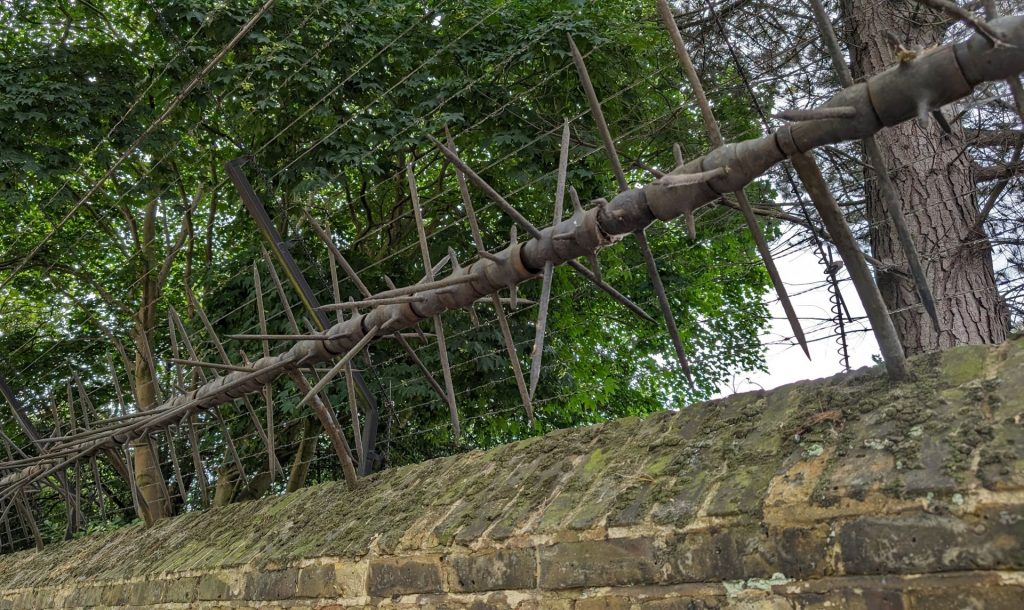
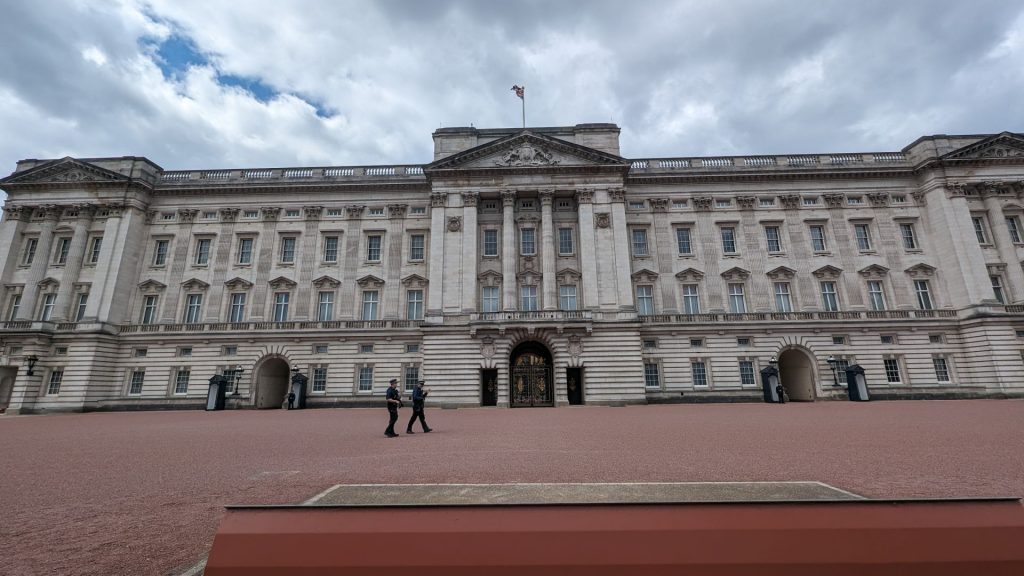
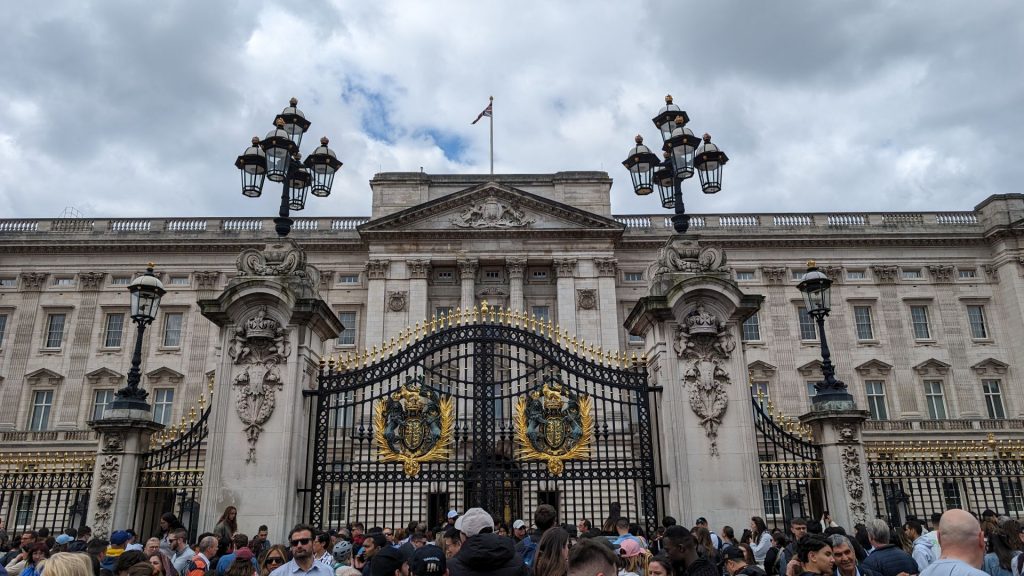
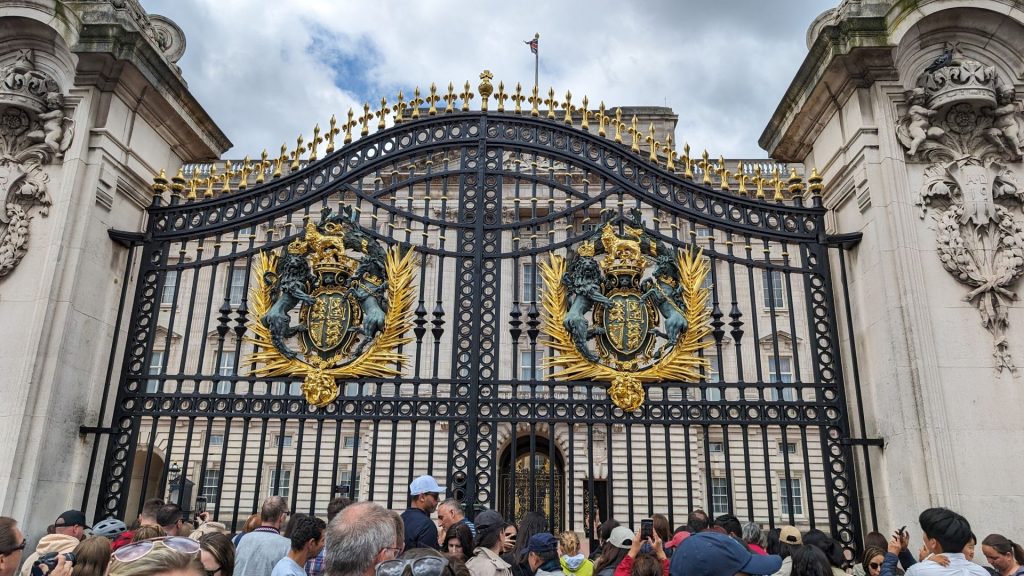
Outside of the gates to Buckingham Palace is the Victoria Memorial, a monument to Queen Victoria, by the sculptor Sir Thomas Brock. Designed in 1901, it was unveiled 6 May 16, 1911, though it was not completed until 1924.
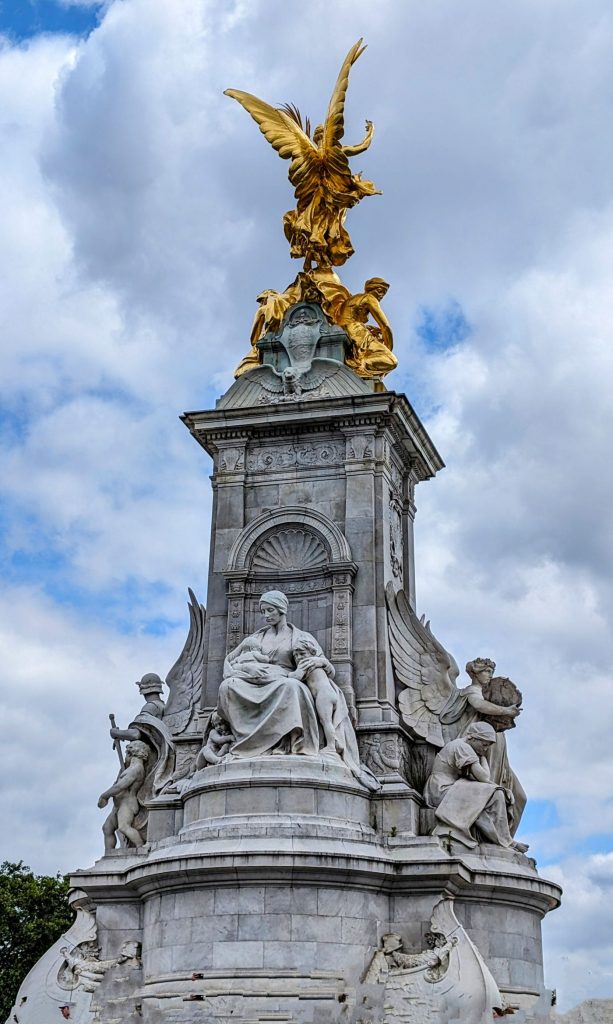
Near the Victoria Memorial are the Lions of Buckingham Palace:
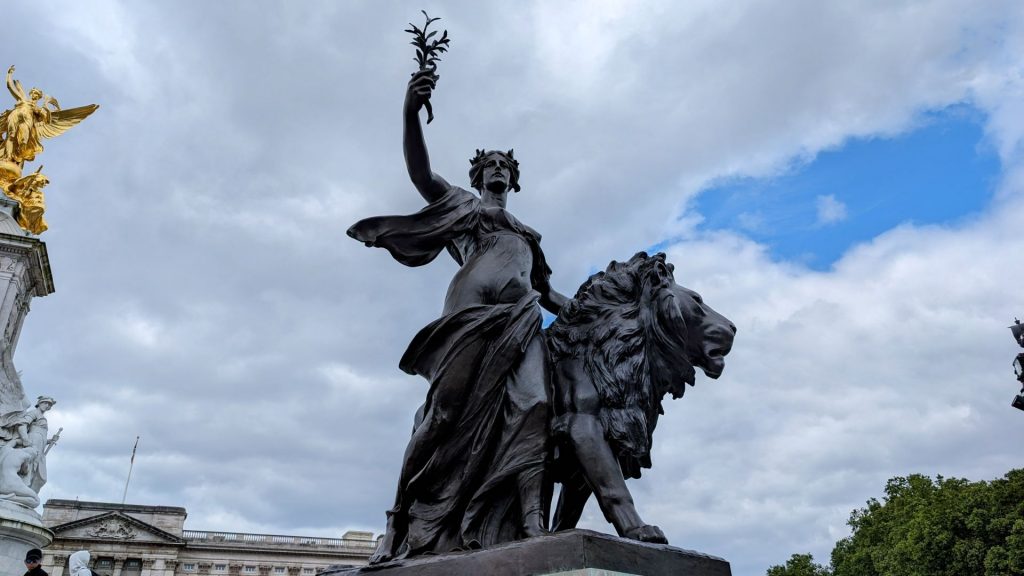
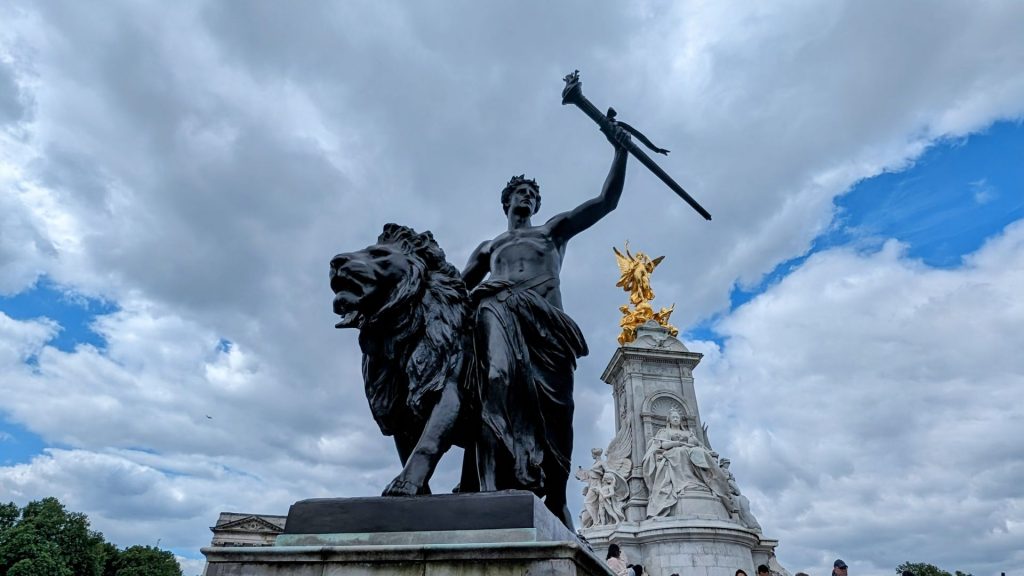
Hyde Park was next on our list. Strolling down the paths engendered a feeling of peace.
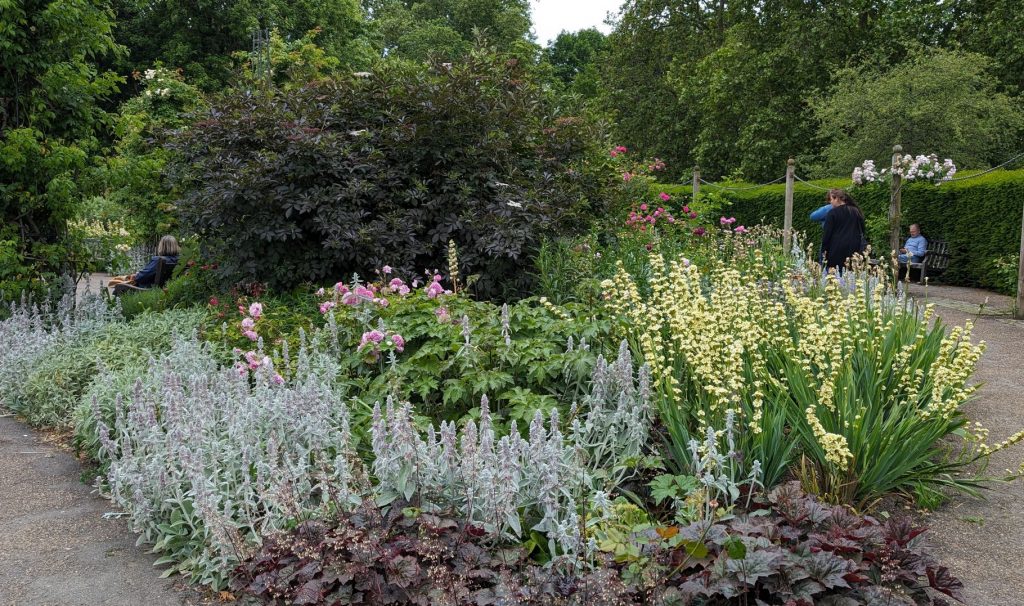
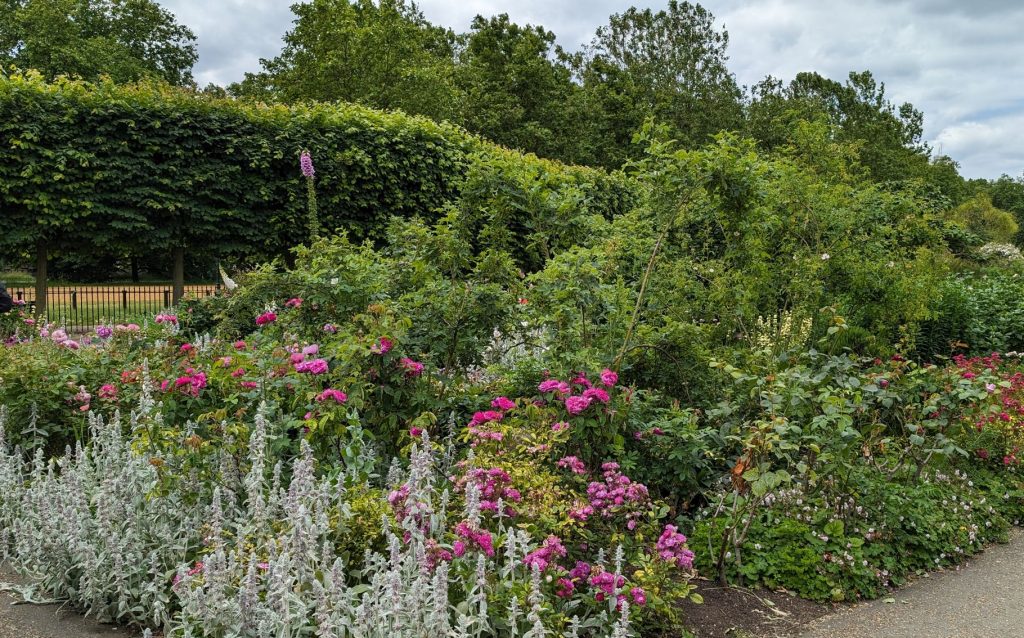
The marble Boy and Dolphin fountain was made in 1862 by Alexander Munro, a friend of the Alice in Wonderland author, Lewis Carroll.
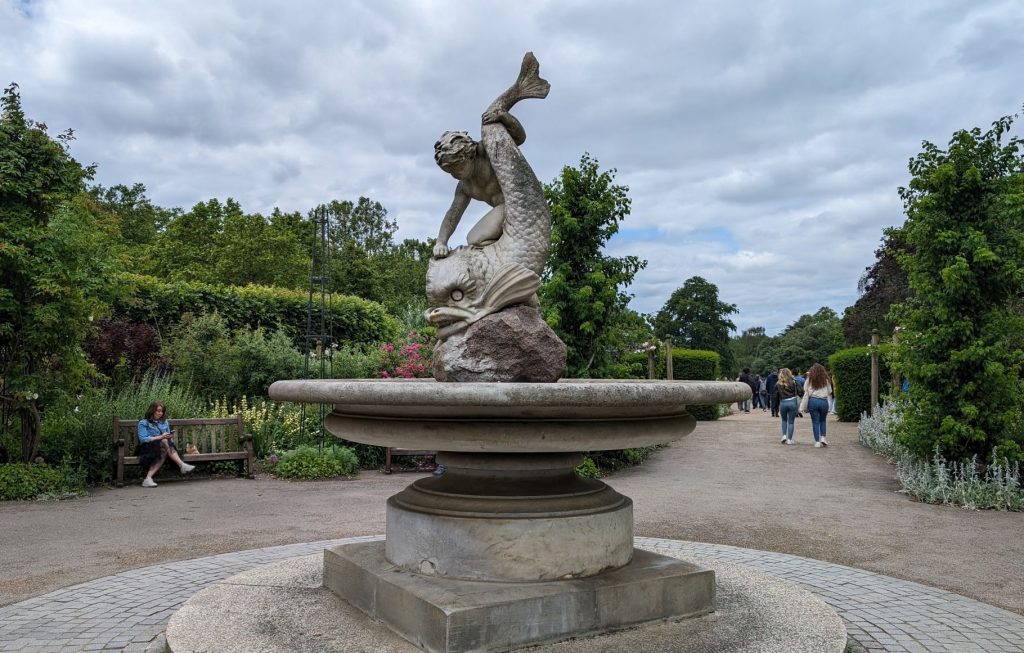
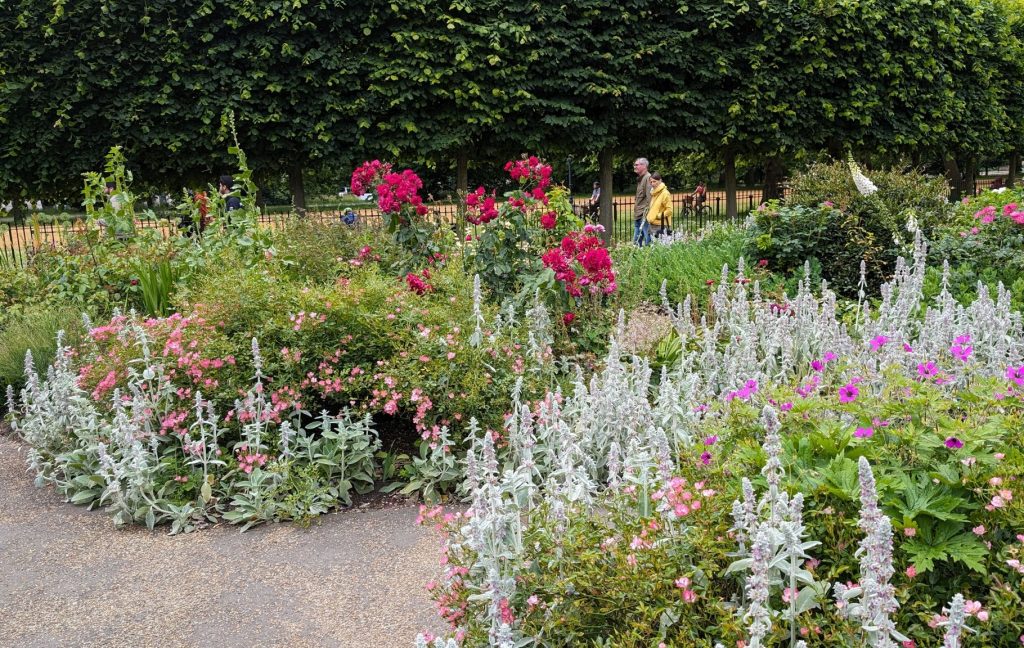
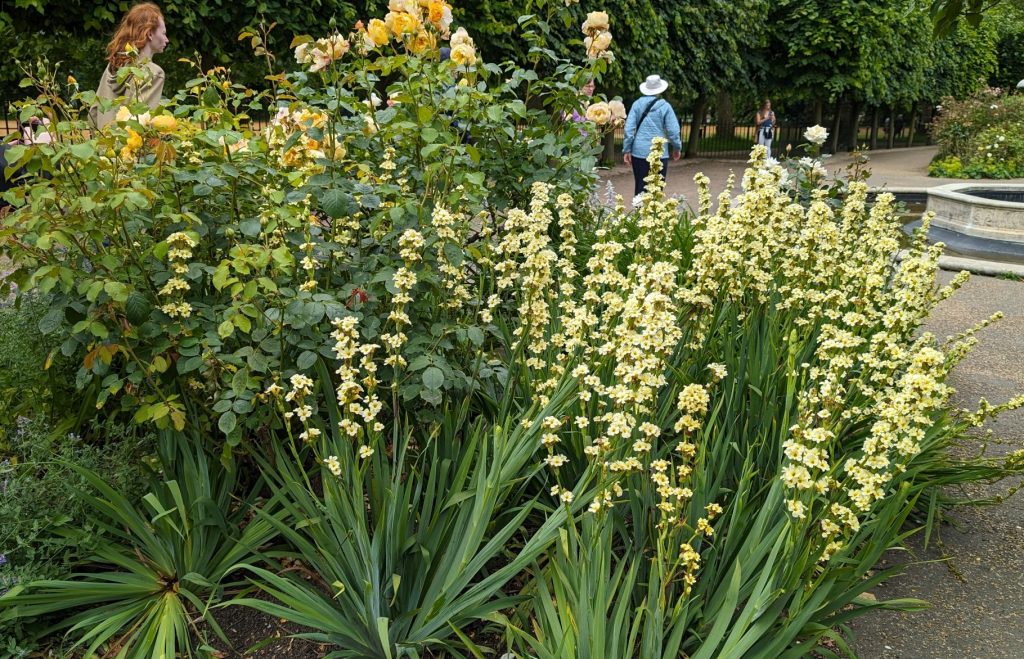
The Cavalry memorial is a bronze sculpture, which represents St. George on horseback stepping over a defeated dragon, with a frieze of galloping horsemen around the base. The memorial commemorates members of the Cavalry Regiments killed during WWI.
Designed by Adrian Jones, an army vet, the sculpture contains bronze which came from guns captured during WWI. The base was designed by Sir John Burnet.
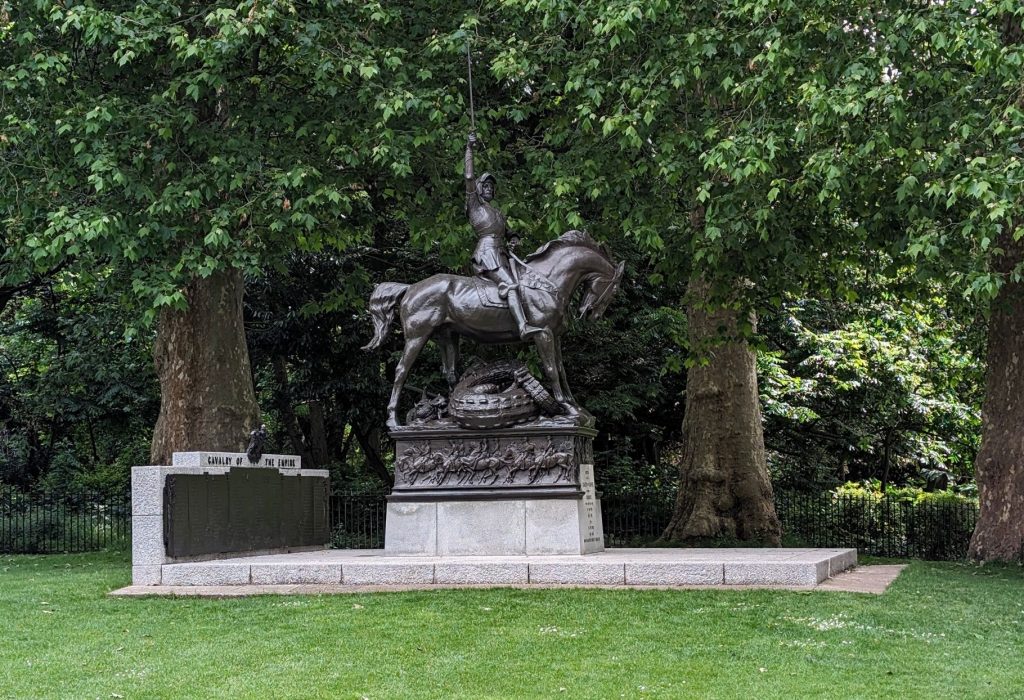
The Huntress fountain, located in the Rose Garden, features a bronze figure of Diana, the goddess of hunting, shooting an arrow.
The fountain was installed in 1906 and made by Countess Feodora Gleichen, the first woman member of the Royal Society of British Sculptors.
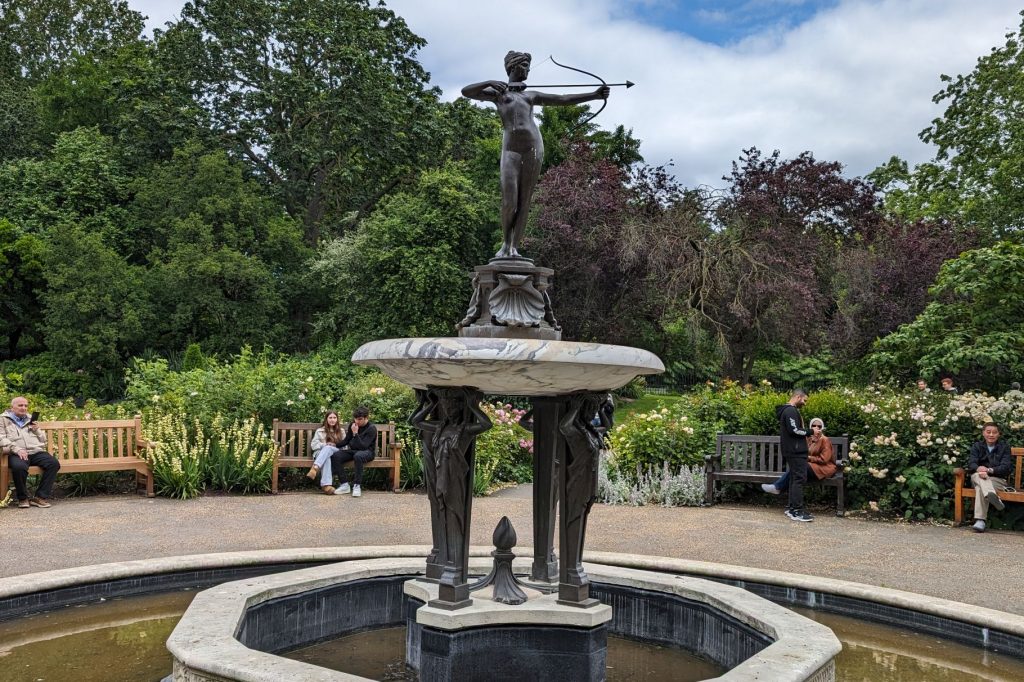
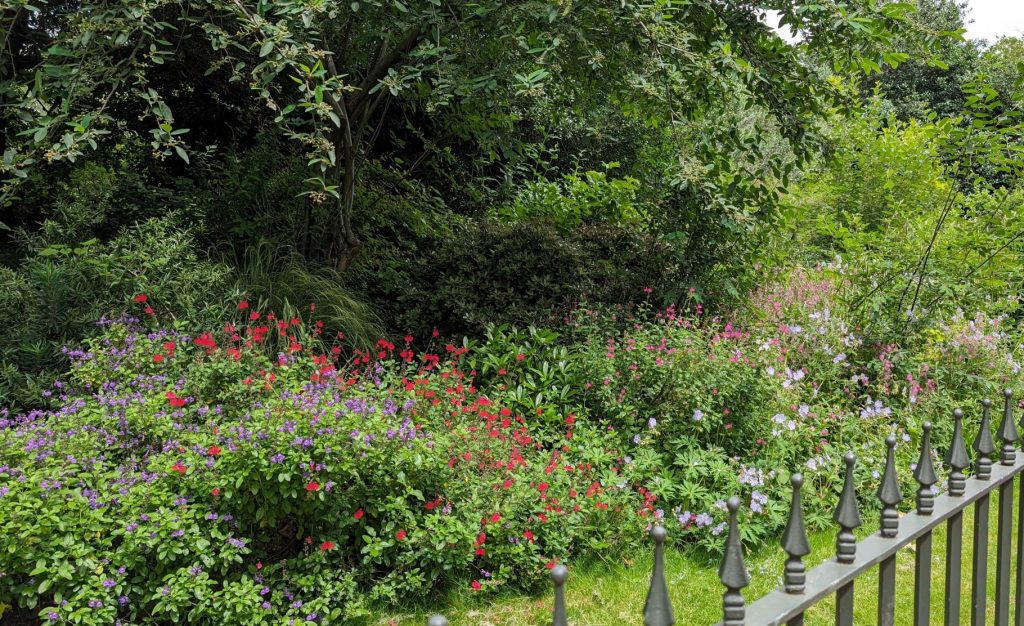
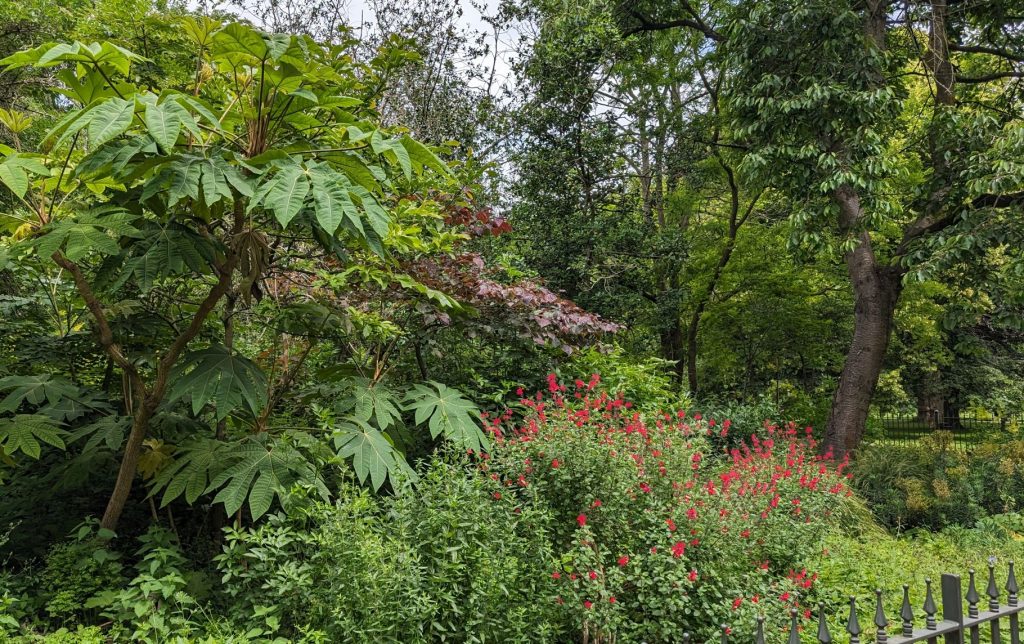
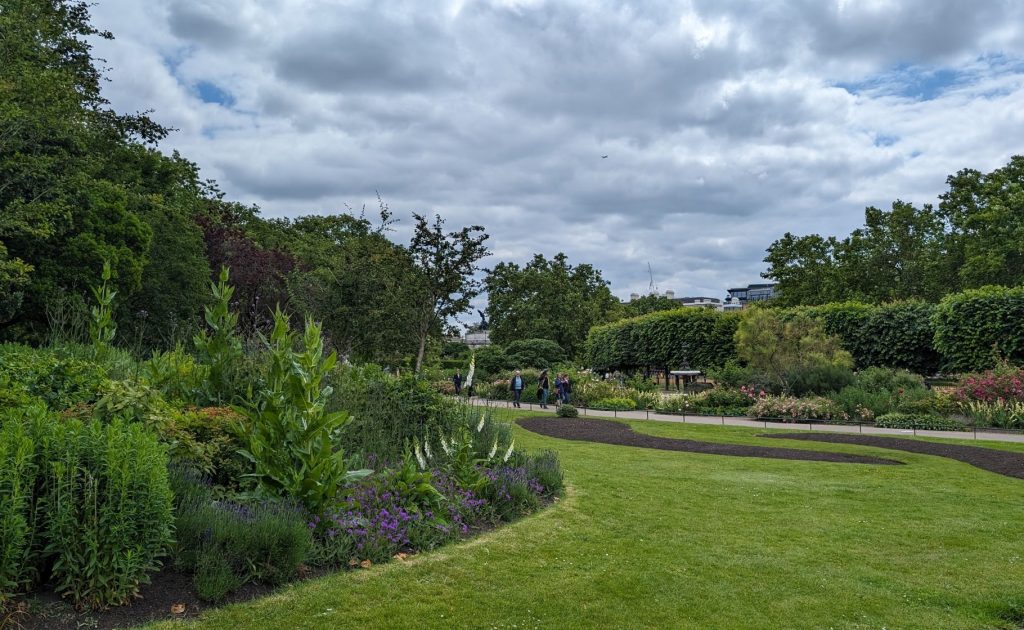
The Royal Albert Hall (pictured below) is a concert hall on the northern edge of South Kensington. It has a seating capacity of 5,272. Since the hall’s opening by Queen Victoria in 1871, the world’s leading artists from many performance genres have appeared on its stage.
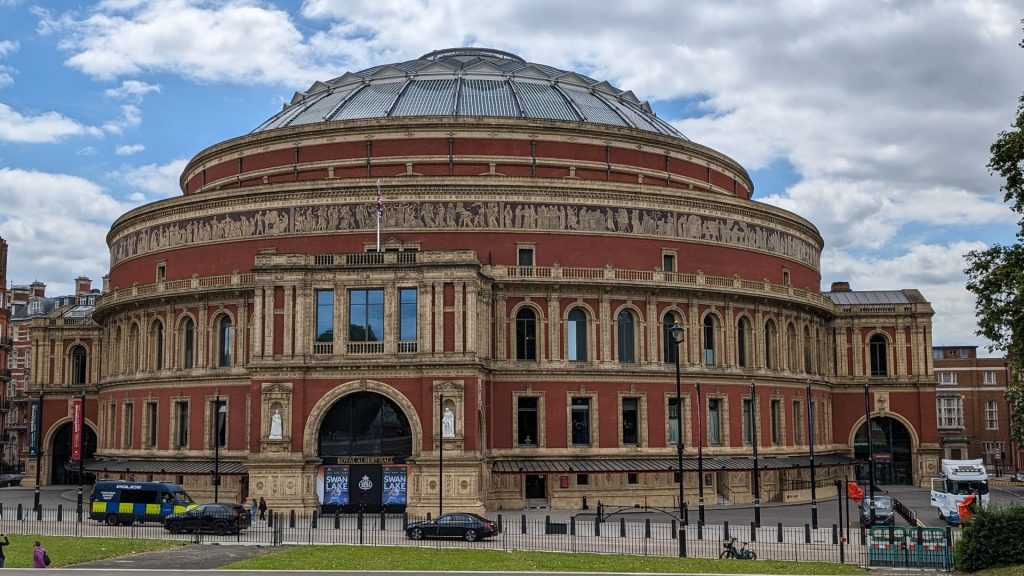
The Albert Memorial (pictured below), directly north of the Royal Albert Hall, was commissioned by Queen Victoria in memory of her beloved husband Prince Albert, who died in 1861. Designed by Sir George Gilbert Scott in the Gothic Revival style, it takes the form of an ornate canopy or pavilion 176 feet tall, in the style of a Gothic ciborium over the high altar of a church, sheltering a statue of the prince facing south.
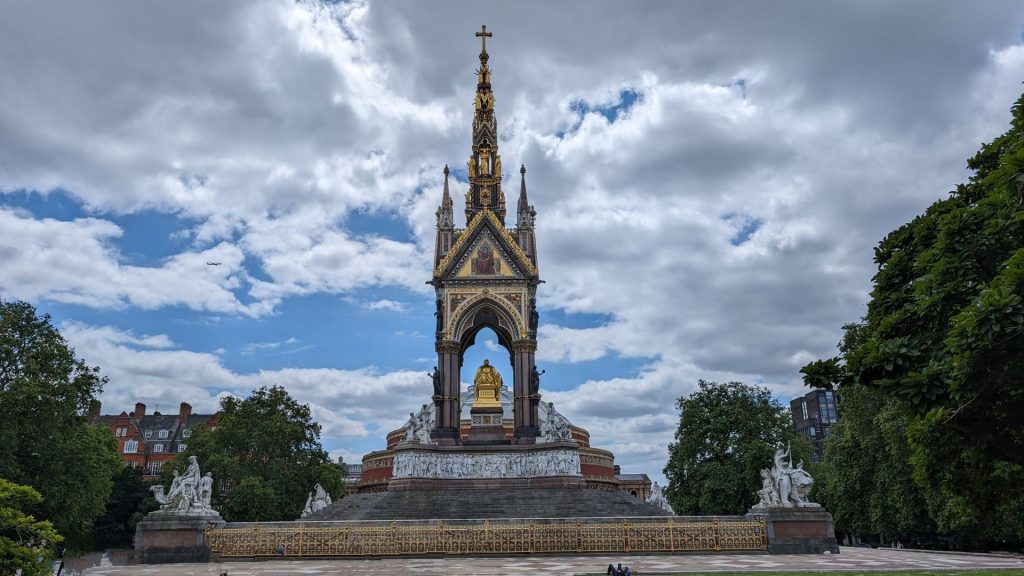
There are four statues near the altar and four on the corners. The four outer works represent the four corners of the globe – Europe, Asia, Africa and America.
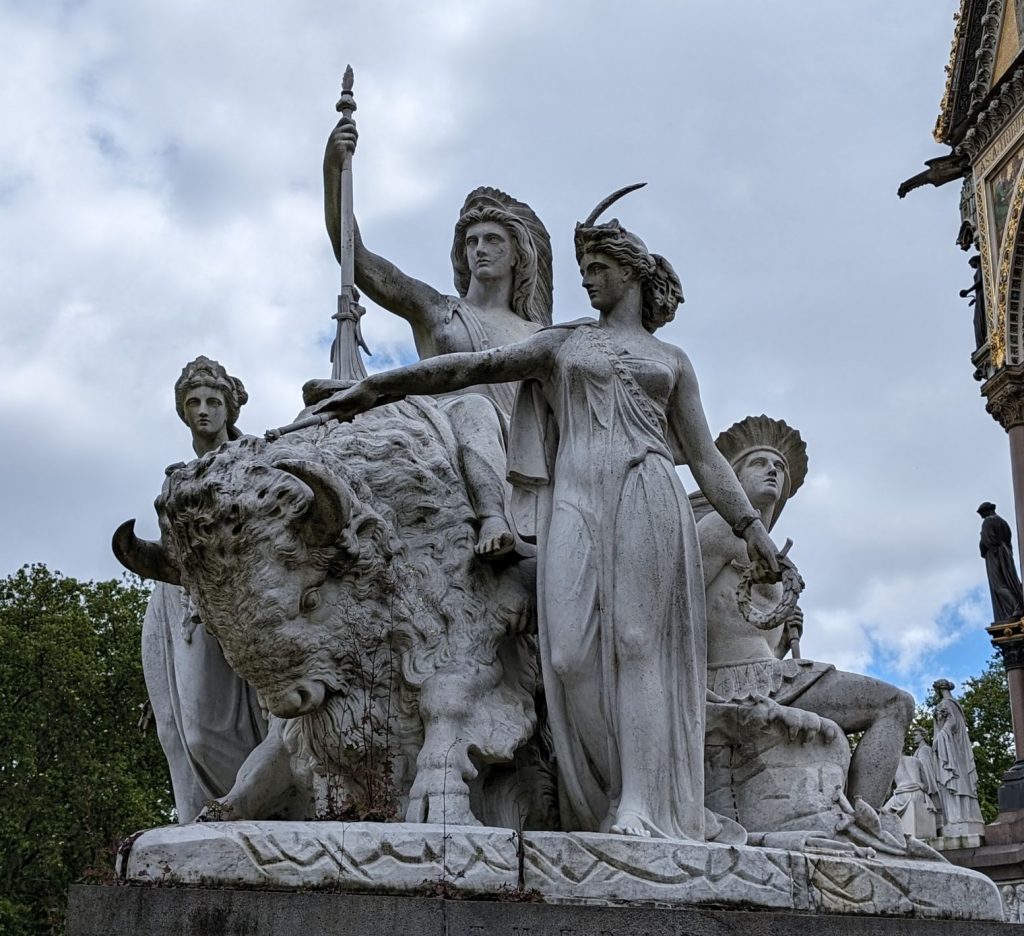
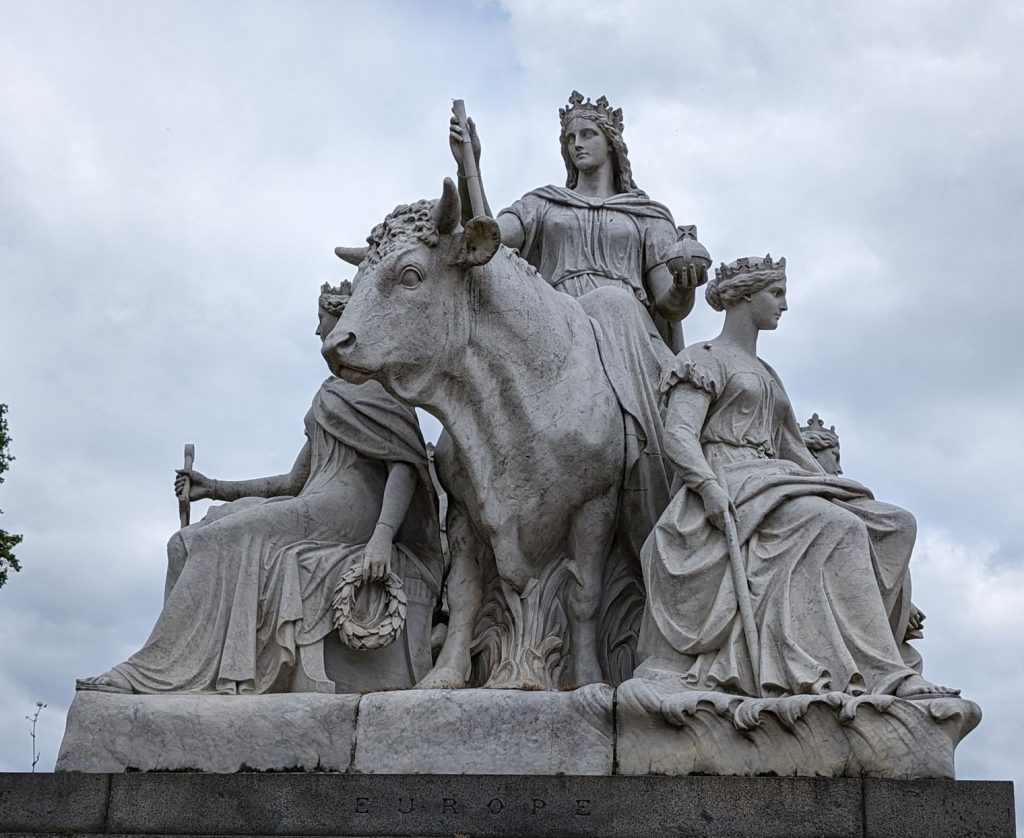
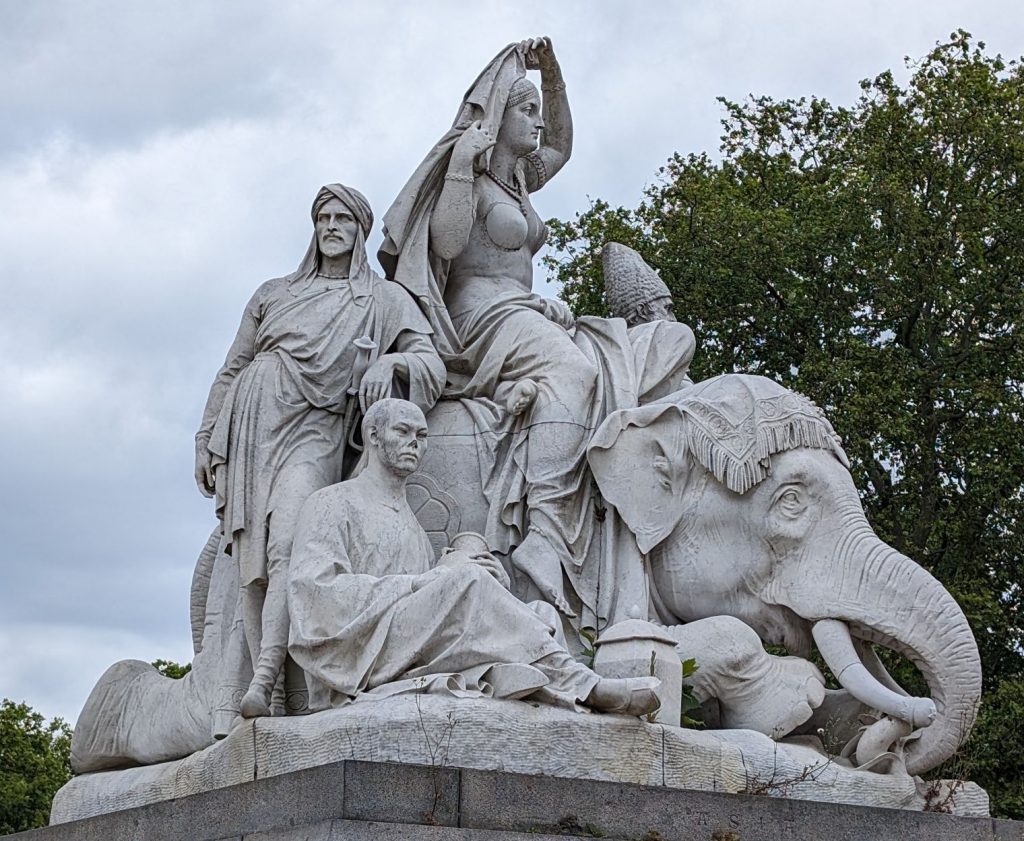
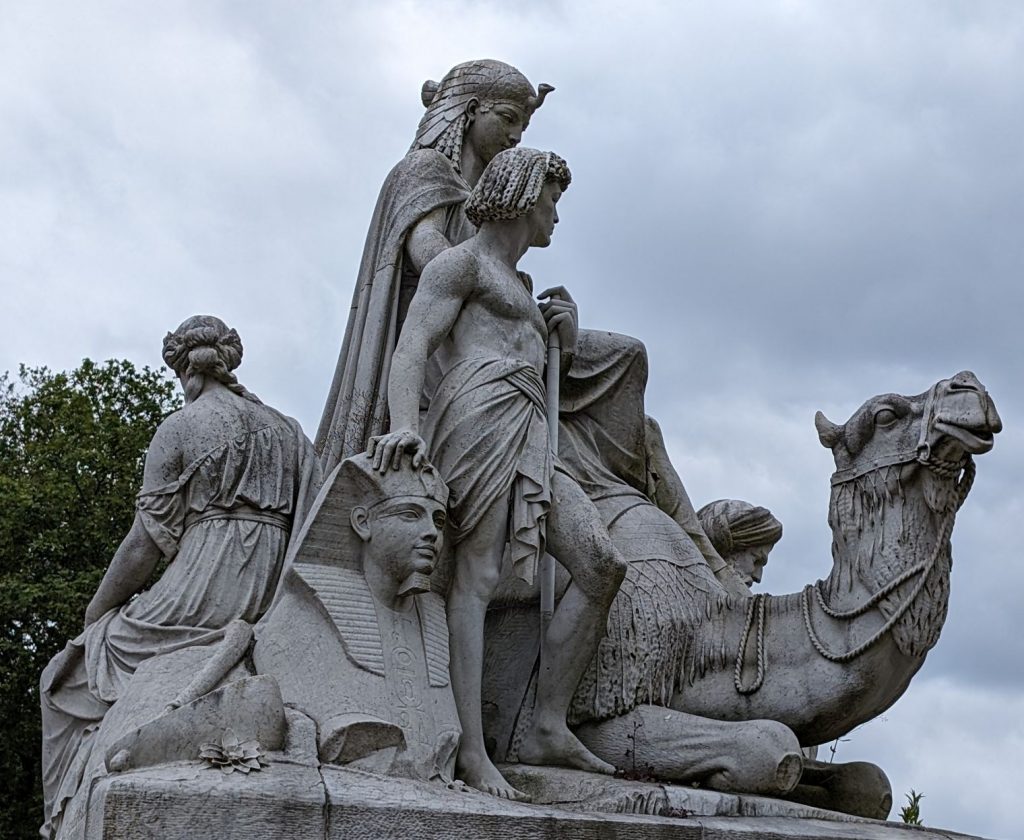
It was time to walk to Kensington Palace.
Kensington Palace was once a small and suburban villa, known as Nottingham House. New monarchs William III and Mary II chose this modest mansion in 1689 to be their country retreat. Over the years, Stuart and Georgian monarchs transformed the palace into a fashionable home for Britain’s young royal families.
Queen Caroline shaped the palace and gardens, and Queen Victoria spent her childhood here. She left to live in Buckingham Palace in 1837. Kensington later became home for minor royals, including her daughter, the talented sculptor Princess Louise.
More recently, the palace has been home to Diana, Princess of Wales, Princess Margaret and The Duke and Duchess of Sussex. It was also the London home of (then) The Duke and Duchess of Cornwall and Cambridge (now the Prince and Princess of Wales) and their children.
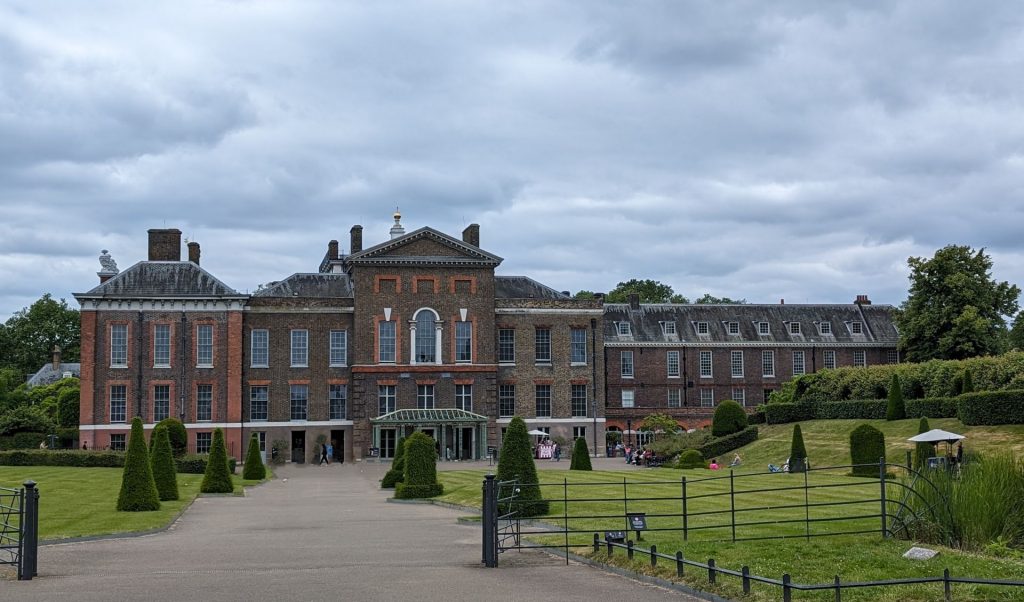
A statue of Queen Victoria stands near Kensington Palace. It was sculpted by Victoria’s fourth daughter Princess Louise, Duchess of Argyll, and erected in 1893. The statue was made from white marble on a Portland stone base. It depicts Victoria aged 18, seated in her coronation robes.
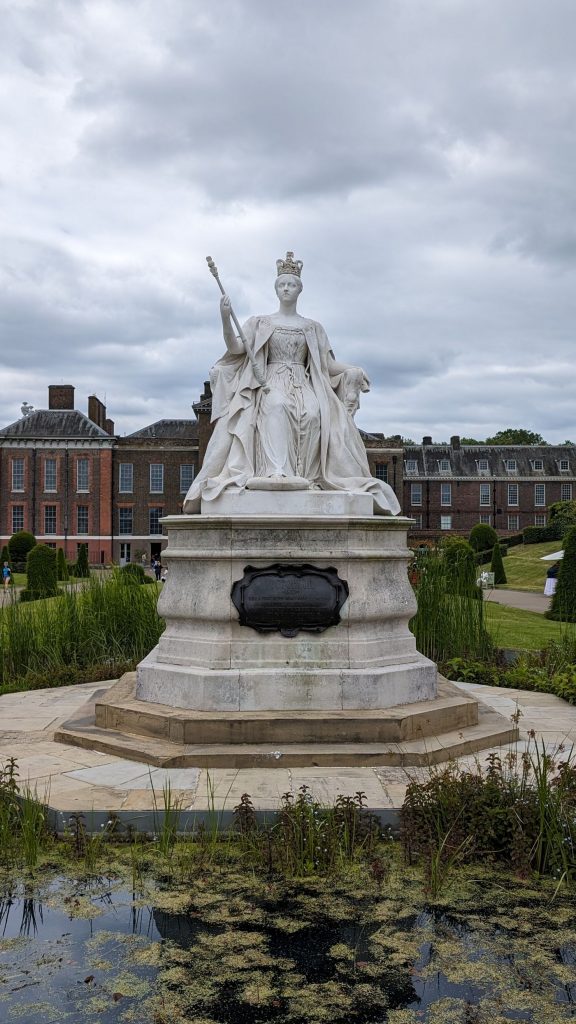
But before we get to Victoria’s story, let’s talk about some of the folks who lived at the palace before her birth and the lovely rooms they used.
When George I (1714-27) succeeded to the throne, he found Kensington ‘very agreeable.’ Under his patronage the palace was adorned and enlarged by the upcoming artist, designer and architect William Kent. Kent’s most lasting achievement at Kensington was his painted interiors. The spectacular King’s Staircase features life-size characters from George I’s court. The staircase was painted by William Kent and completed in 1724. The wrought iron balustrade is by French master blacksmith Jean Tijou.
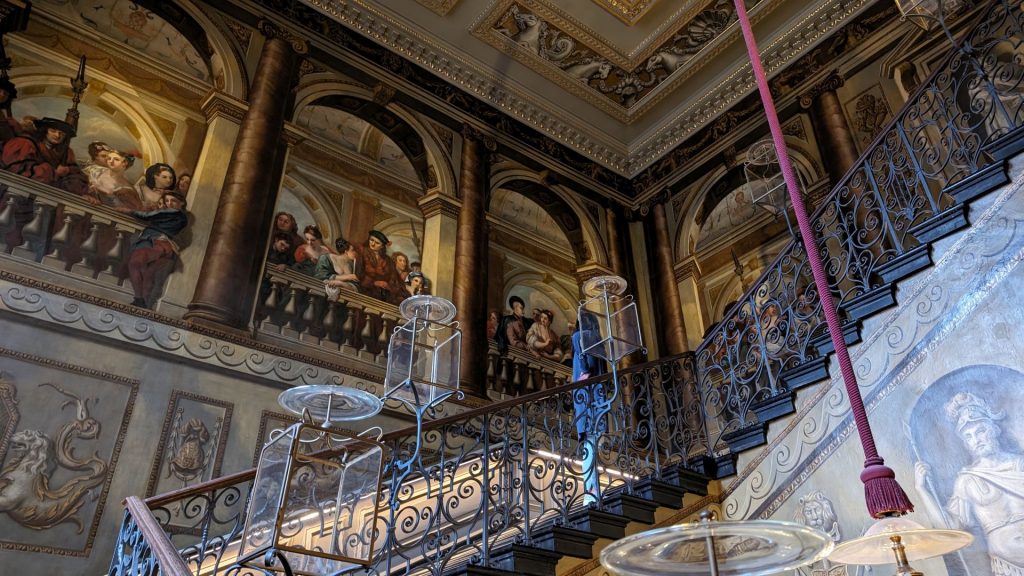
The Presence Chamber is the room in which King George II received “ambassadors, men of ideas, and ordinary people.” An audience with the king could change your life. People brought petitions before him asking favors or seeking royal approval. A man awaiting execution for counterfeiting money begged the King for a pardon. Another wanted a patent for his new spinning machine, and a group of sailors’ widows asked for their deceased husbands’ pensions. In 1734 the royal couple received a Yamacraw chief and his attendants from the new American colony Georgia.
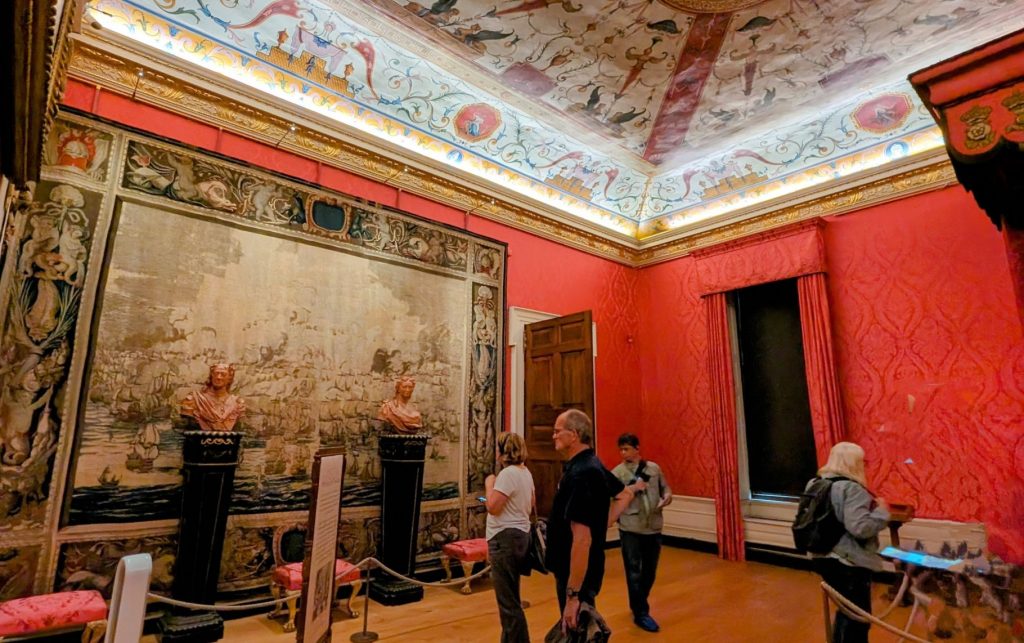
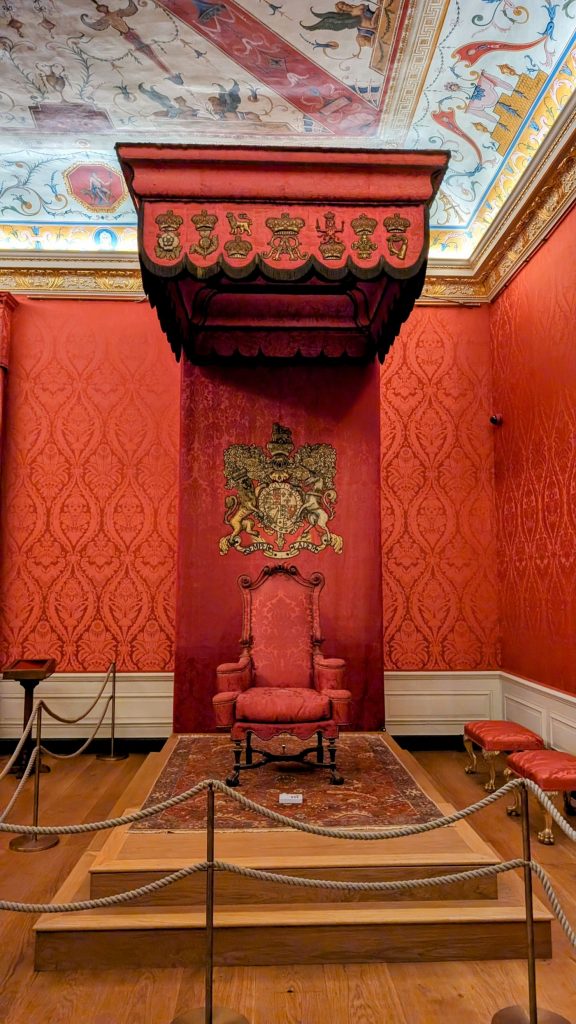
The Cupola Room was used by George II and Queen Caroline for entertaining. They were patrons of the composer Handel, who dedicated compositions to them and taught music to their children. Handel brought his troupe of Italian opera singers to the palace.
On other occasions, extravagantly dressed guests danced minuets and country dances in this room, while the Queen and her circle risked high stakes, gambling and playing cards in the Drawing room.
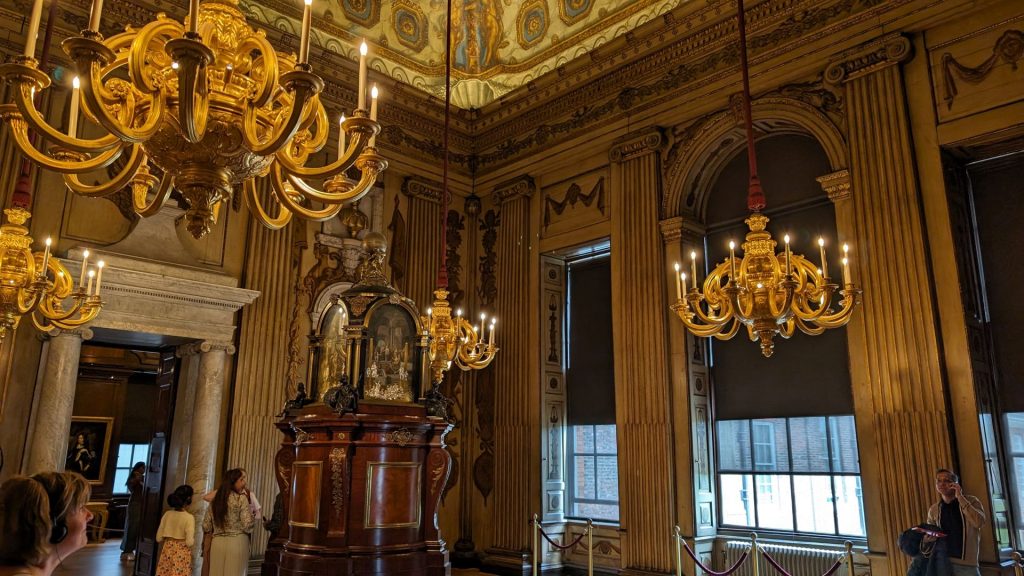
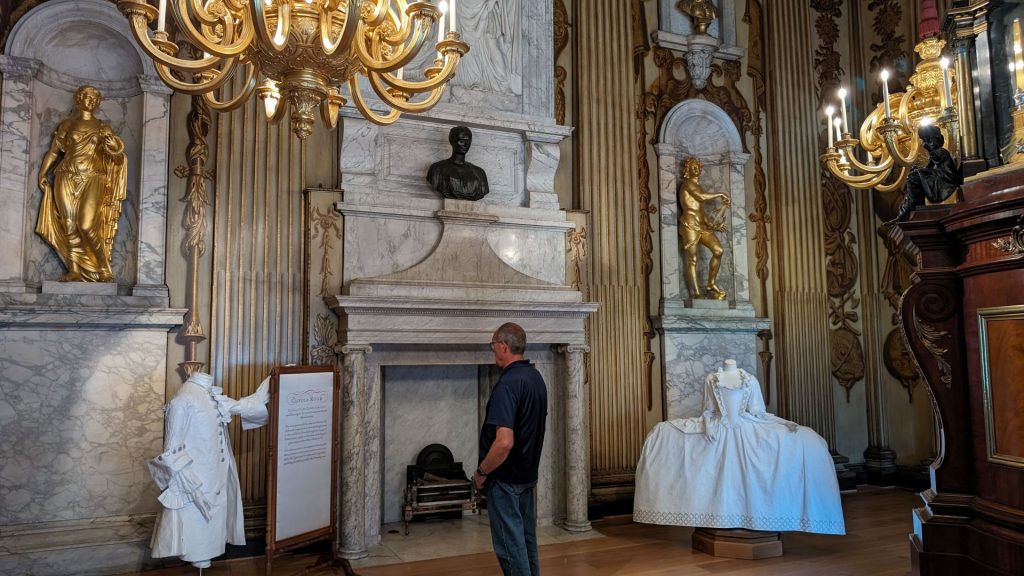
The King’s Drawing Room was open to suitable-dressed visitors at ten o’clock at night, several times a week. It was the high point of social life at court – only the most privileged guests made it this far into the palace. The most magnificent balls were held on the King’s of Queen’s birthday and on the anniversary of his accession to the throne. On these occasions guests danced by candlelight and were entertained with illuminations and fireworks in the garden.
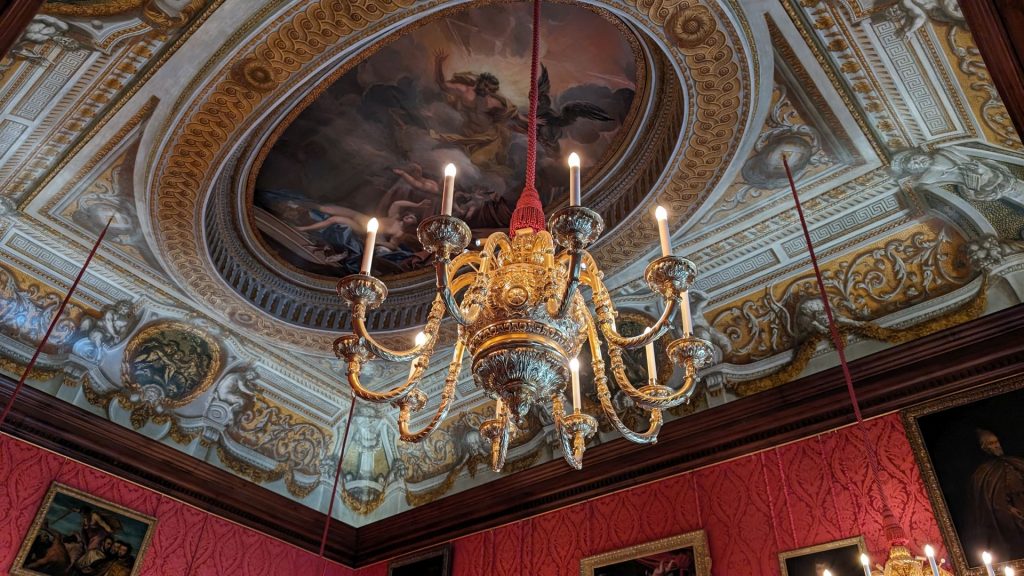
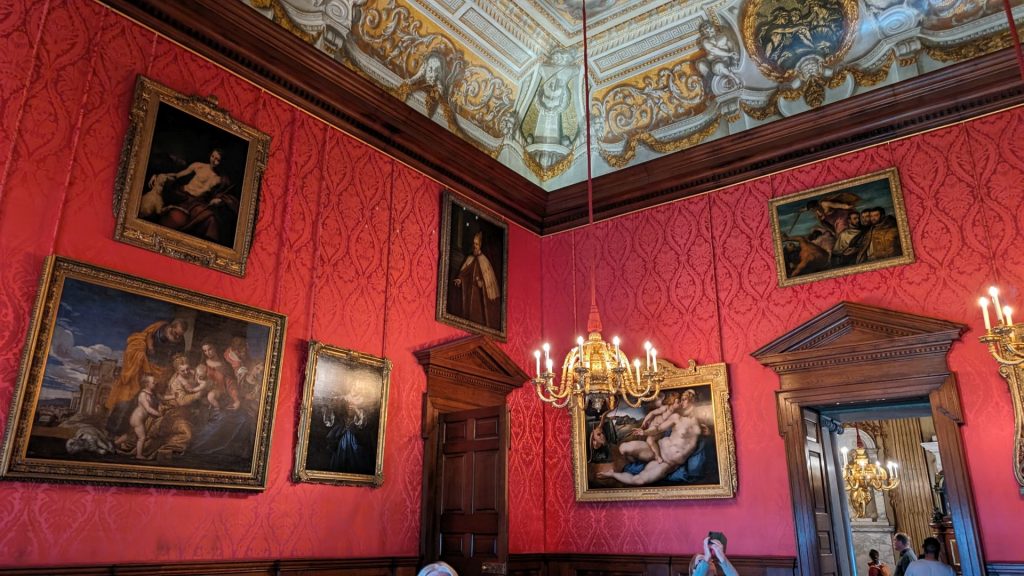
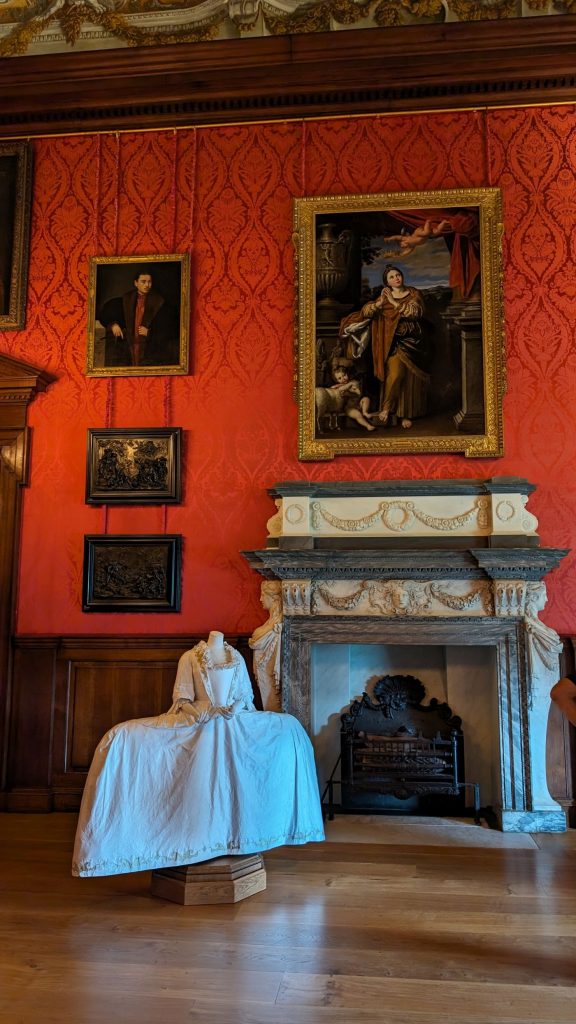
The King’s Gallery was intended as a gallery for the finest pictures in the Royal Collection. Architect and designer William Kent refurbished this room just before George inherited the throne from his father. Kent transformed the space, adding the red damask fabric on the walls, the marble chimneypiece and new door cases that were painted white with gold gilding. He also painted the seven large ceiling canvases that show scenes from the life of Ulysses, a character created by the ancient Greek poet Homer.
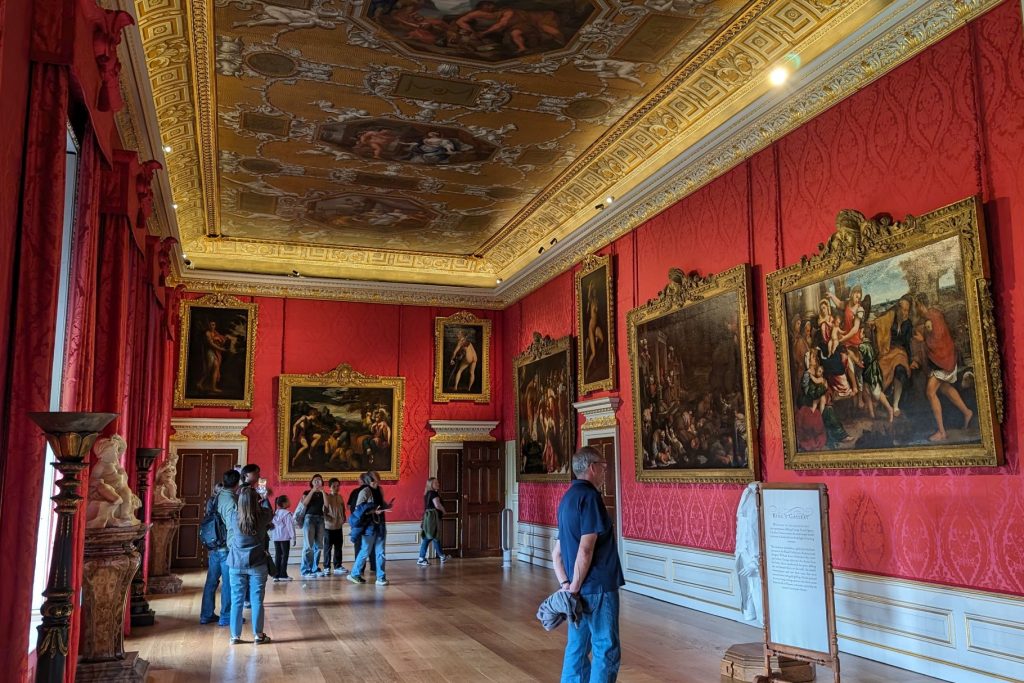
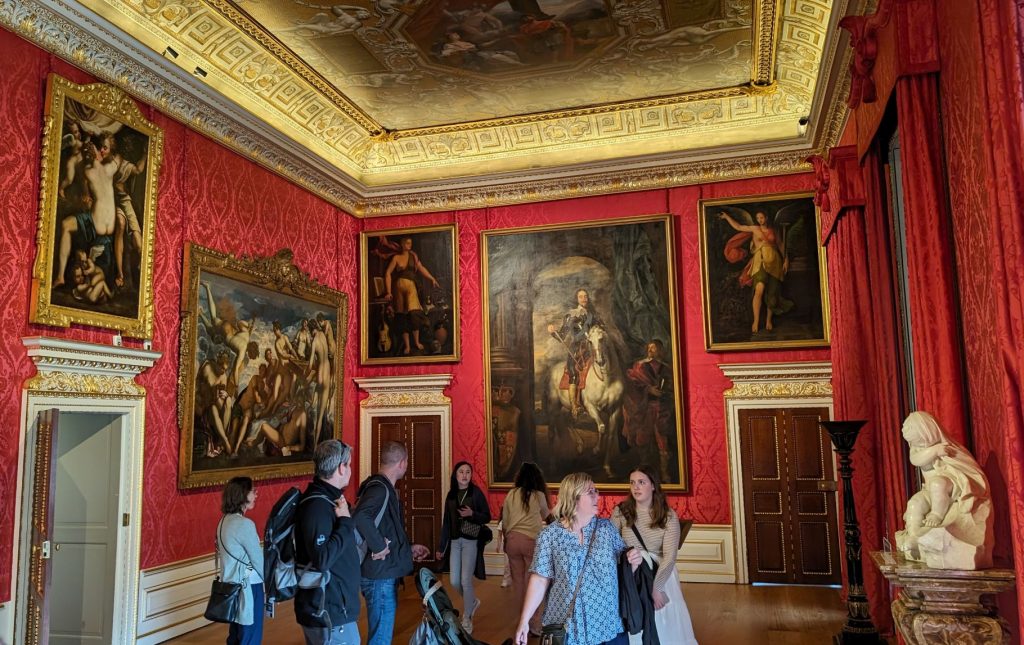
Pictured below are two of the seven ceiling canvases Kent painted.
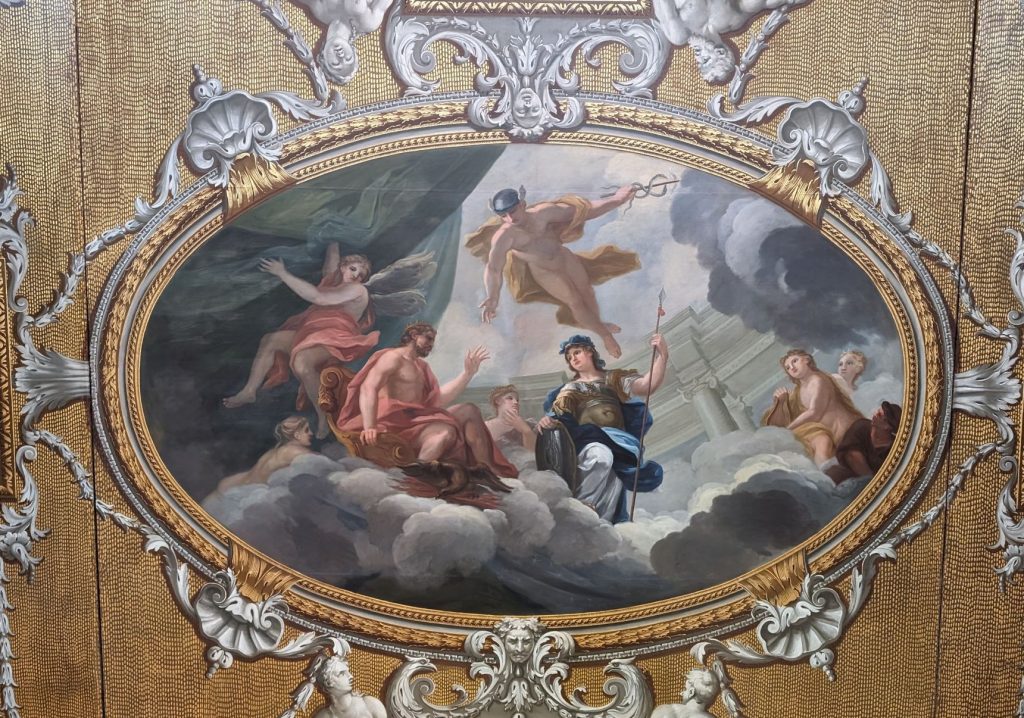
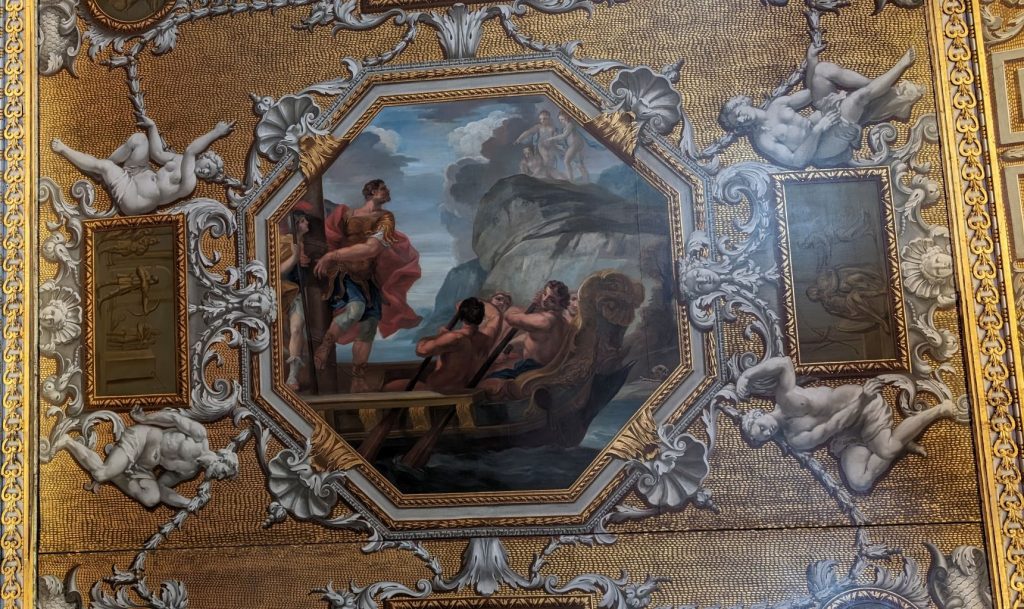
Here are a couple of pieces of artwork that I found to be of interest.
A Musical Tea Party, by Marcellus Laroon the Younger, 1740. In this satire on high society, an aristocratic lady is hosting a gathering. In the center, a young Black page boy holds a try of teacups and wears a collar suggesting his enslaved status.
Tea was an expensive luxury in the 1740s. Its presence in the painting shows the household’s status, as does the presence of the page boy. Most Black people in paintings of this time are anonymous figures painted to reflect the wealth of the white people portrayed.
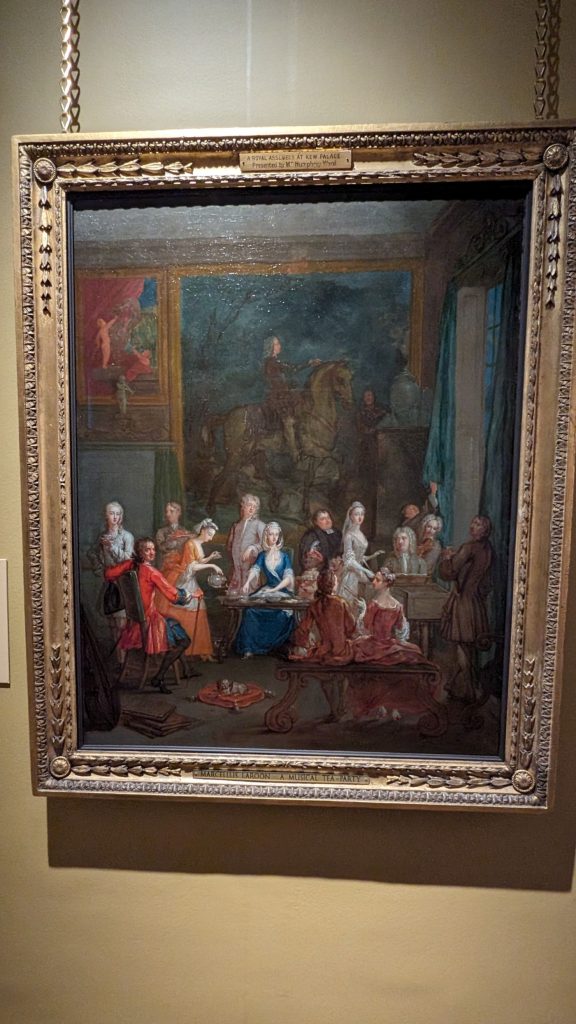
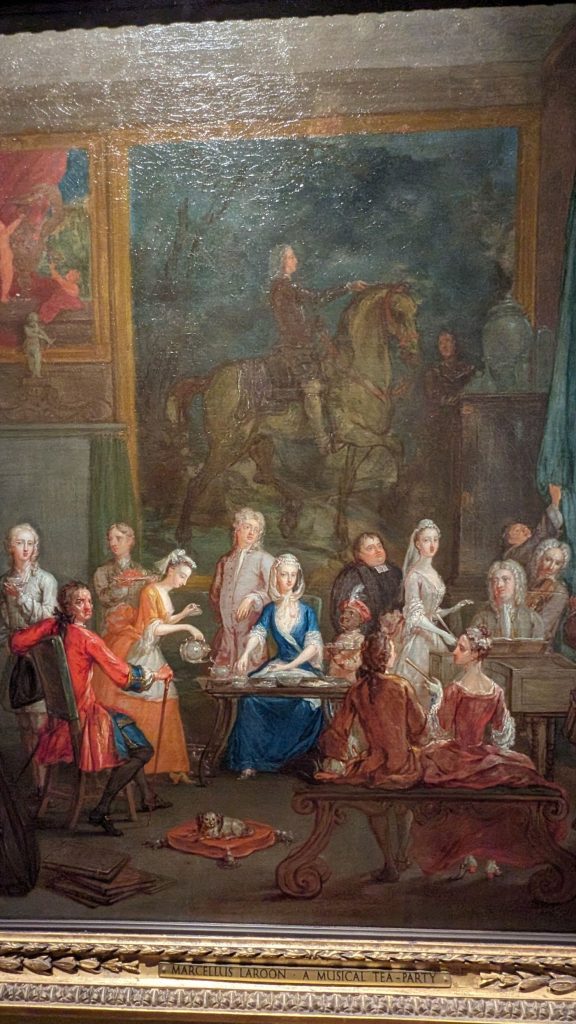
The next picture is A Dinner Party, also by Marcellus Laroon the Younger 1719-25. This painting of a group attended by servants was given to George I and hung in Kensington Palace.
From left to right, a gardener sneaks a drink from a waiter, a man clears the floor, several men carry dishes, a page serves in livery (uniform), a page boy serves wine and a musician plays. Women did not serve in high profile public facing palace roles, working instead behind the scenes.
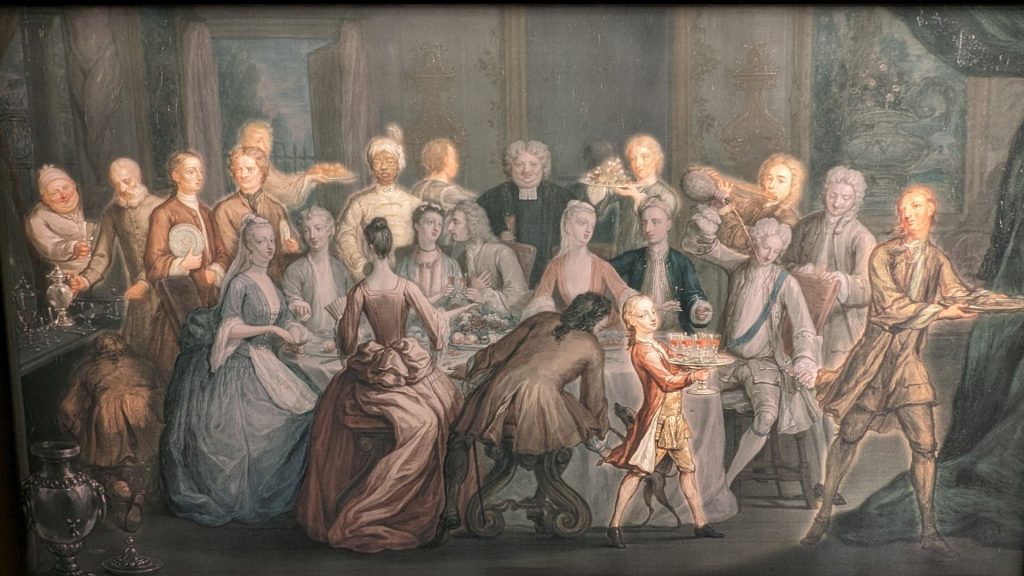
And now, for a few personal items on display at the palace.
The velvet-cushion stool (below) was William III’s toilet at Hampton Court Palace. It is attributed to Richard Bealing, upholsterer, c1700. The lid lifts to reveal a chamber pot. When using it, the King was assisted by his senior political advisor, Dutch-born William Bentinck, Earl of Portland as ‘Groom of the Stool.’ (Now there’s a job for which I would not apply.)
Next to the stool is Queen Caroline’s warming pan, by Seth Lofthouse, 1715-1716. This pan heated the future Queen Caroline’s bed. It was filled with hot coals under the supervision of her bedchamber woman. The drudgery of ‘body-servants’ was recorded by Lady Henrietta Howard, who fumed at having to hold up Caroline’s wash basin for her, a position complicated by her other role – the King’s mistress. (Yeah, another job(s) for which I would not apply.)
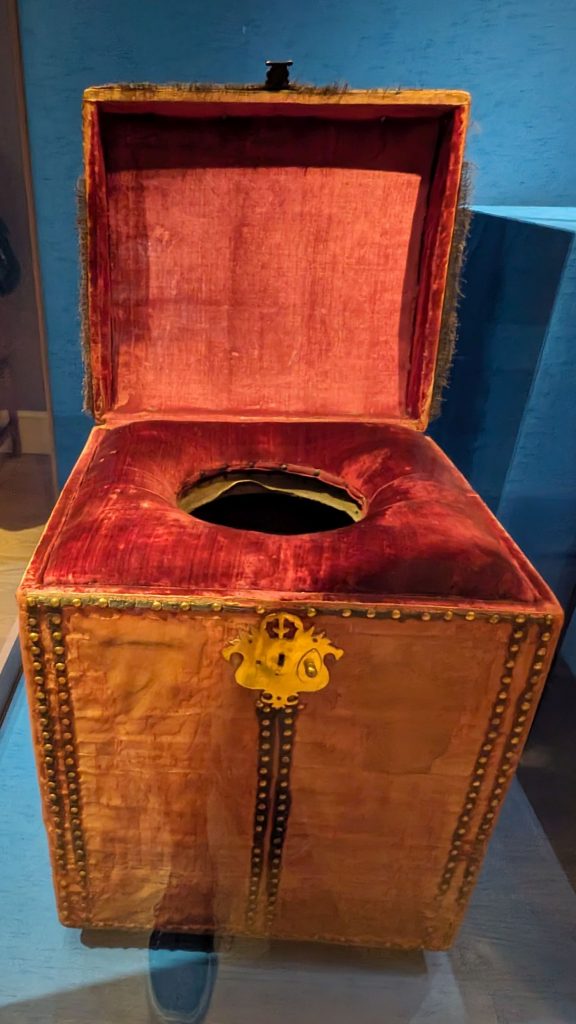
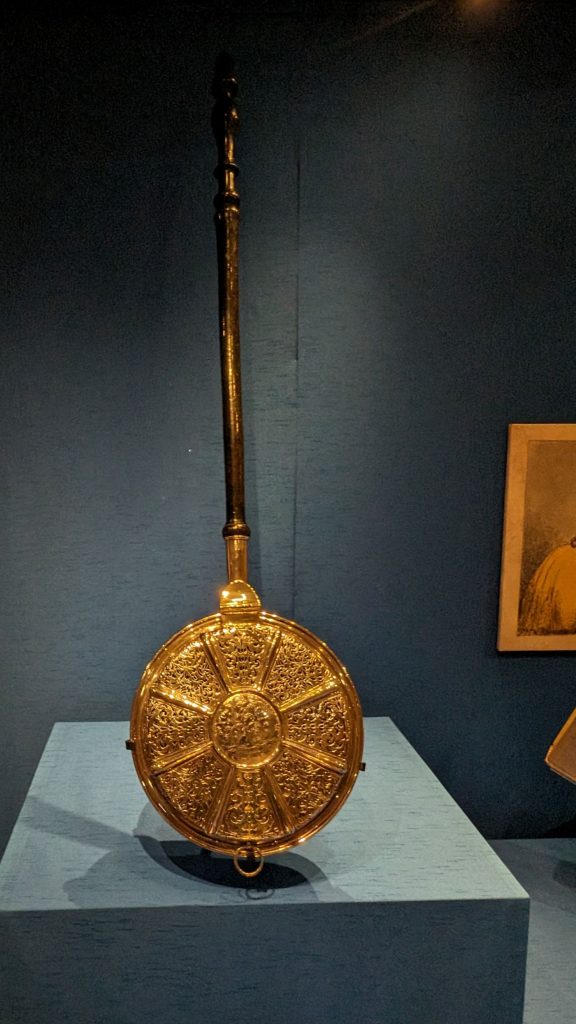
. . . and let’s check out the Chamber pot, by Marmaduke Best, 1672. After a day at the races in 1789, the Prince of Wales (later George IV) dined at the Mansion House, York, and is reputed to have used this chamber pot. One of the oldest surviving silver chamber pots in the country, it would have been cleaned afterwards by the Necessary Woman. (You know I would not have applied for this position either.)
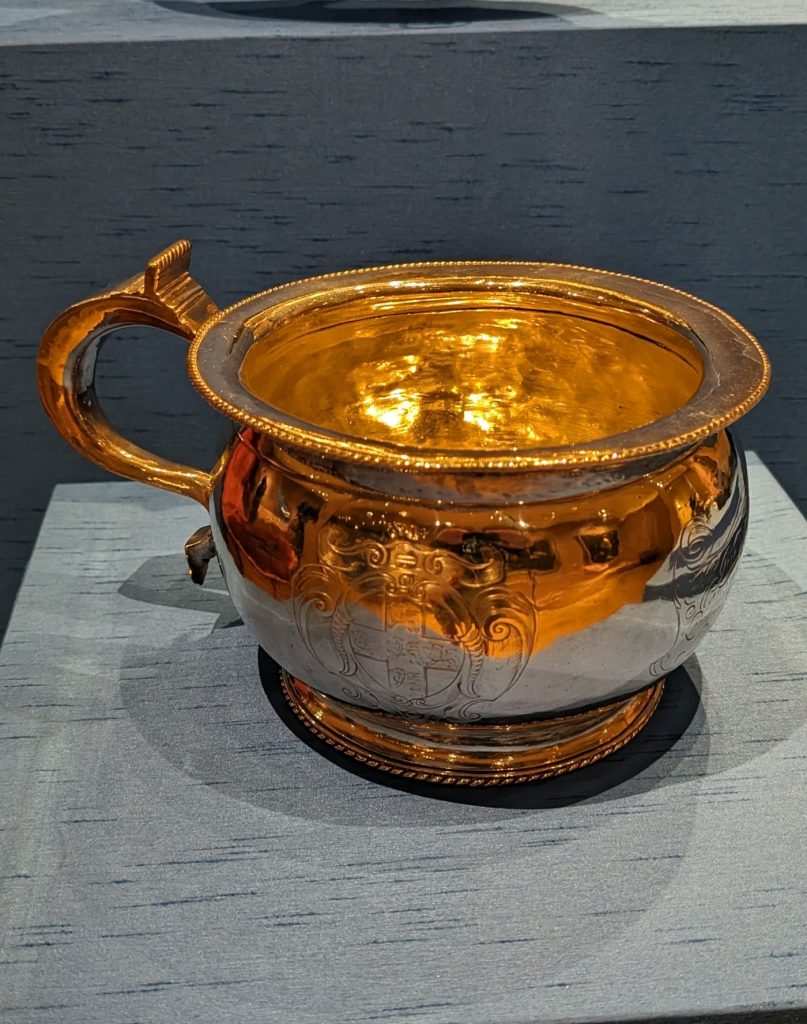
The jewelry picture below is Queen Victoria’s emerald necklace, earrings and brooch, 1843. Prince Albert designed this matching set of jewels, called a parure, for Victoria. The Queen wore the set to a banquet at Trinity College Cambridge to celebrate her husband’s appointment as chancellor. Victoria noted other occasions on which she wore this set including to Prince Alfred’s christening, when she paired them with the lace from her wedding dress.
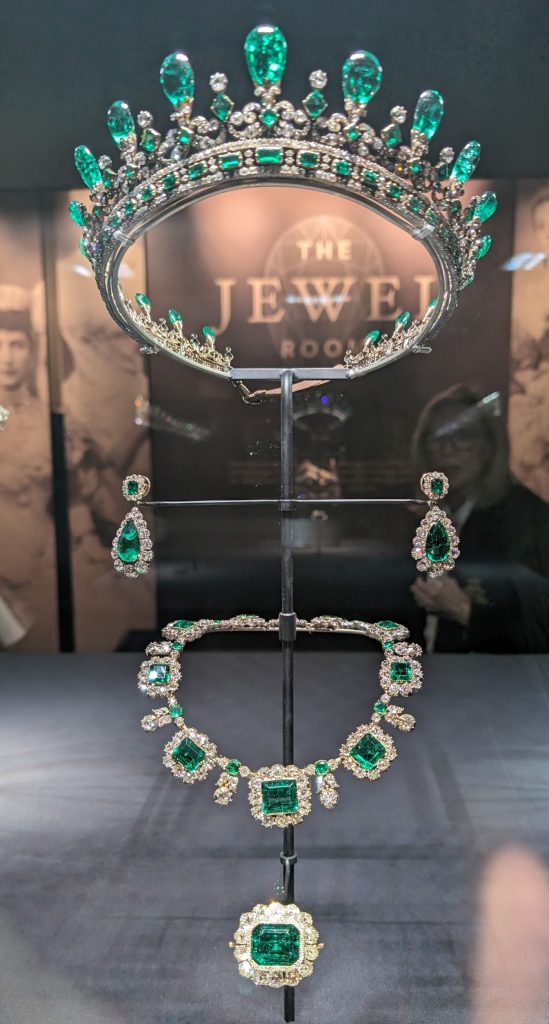
So. . . Victoria. On May 24, 1819, Victoria was born at Kensington Palace. It was then the least fashionable of the royal palaces, hidden away behind the lime trees of its wide green gardens to the west of London. The birth room:
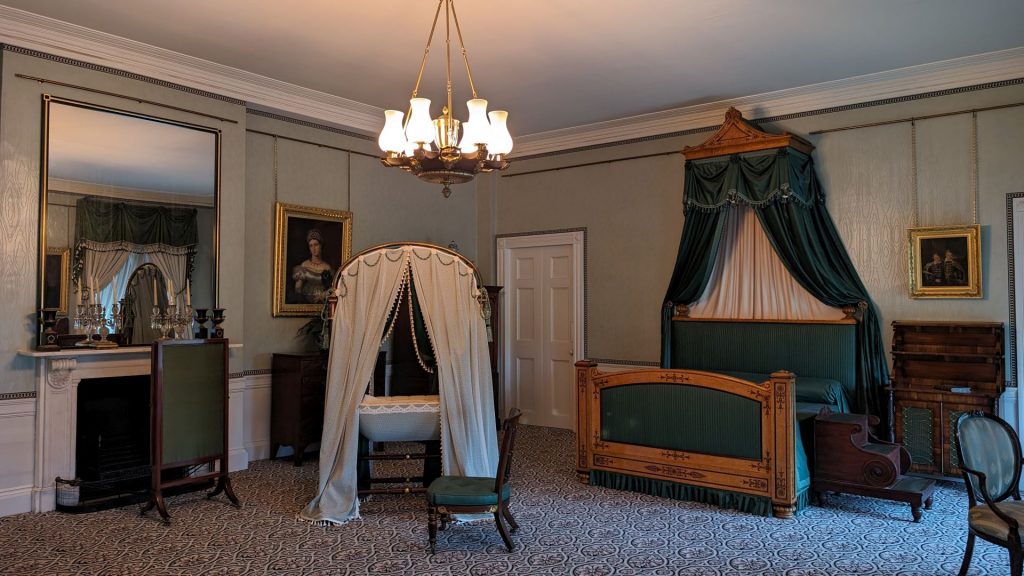
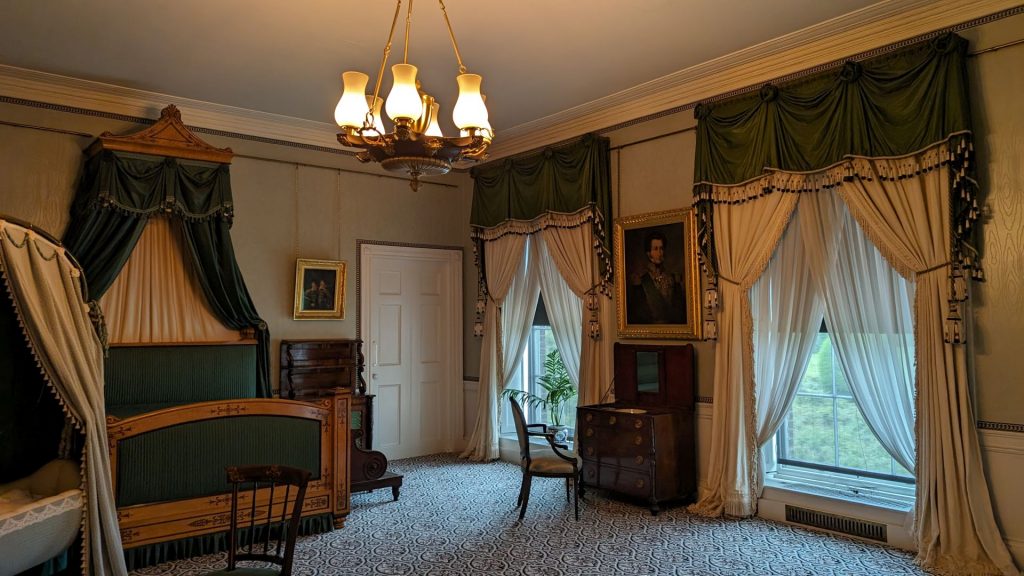
From https://www.historyextra.com/period/victorian/queen-victoria-childhood-kensington-system/:
“The arrival of Alexandrina Victoria, as she was christened, did cause some excitement. A long line of carriages calling for news about the health of the mother, the Duchess of Kent, reached all the way to Hyde Park Corner. But at that point the new baby, King George III’s latest granddaughter, was fairly low down the royal pecking order.
As the years of her childhood passed, however, and as her elder cousins failed to thrive and died, Alexandrina Victoria grew in importance. It gradually emerged that the little girl growing up quietly behind closed doors at Kensington Palace would one day reign over the whole of the British Isles, including Ireland. And, in due course, a quarter of the globe’s landmass.”
Victoria’s father, Edward, died eight months after she was christened, leaving the Duchess (Victoire) to raise Victoria alone.
Image: Victoire, Duchess of Kent with Princess Victoria (after Beechey) c1824. The infant Victoria holds a miniature portrait of her late father.“
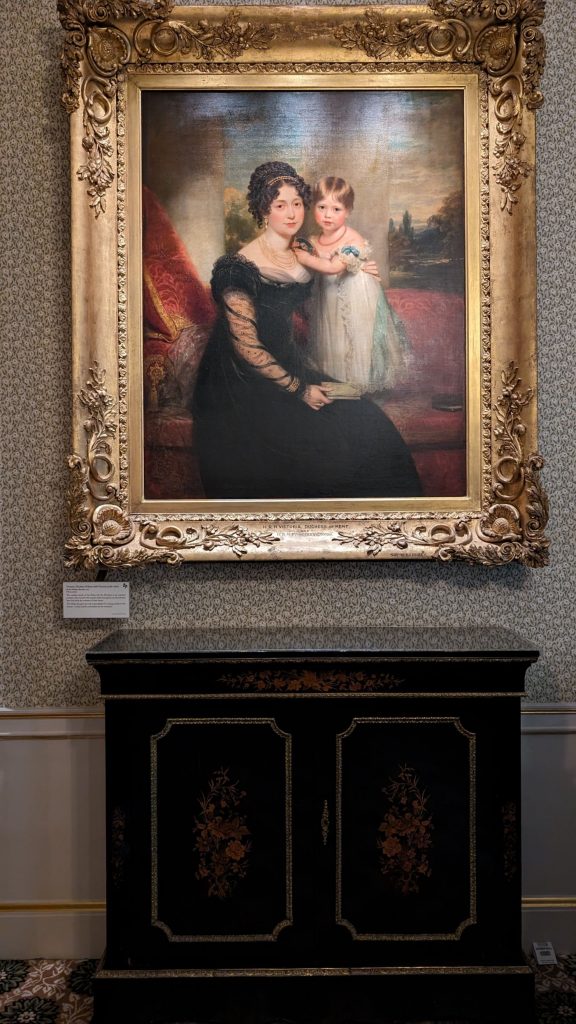
The Duchess of Kent did her best to educate and protect Victoria. But she lacked confidence in herself. She fell in love with a man on whom she could rely, John Conroy, who she married. Conroy could see, as the duchess’s chief advisor, that he might one day become the power behind the throne. He devised something called the ‘System,’ a set of strict rules under which the princess would live.
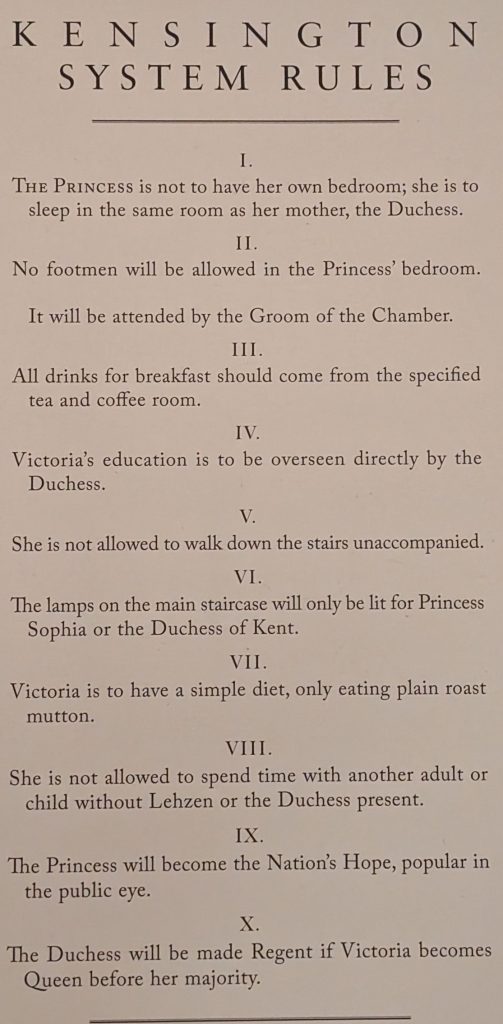
Victoria was educated almost entirely within the confines of the palace. Frequent trips to the theater, daily rides in the gardens and her favorite dog Dash punctuated Victoria’s early days. However, Victoria saw virtually no other children and was kept away from life at court.
Later in her life, the Queen later recalled a childhood full of ‘painful and disagreeable’ scenes, but she also enjoyed life at Kensington.
A few more pictures. I don’t remember what all of the rooms are.
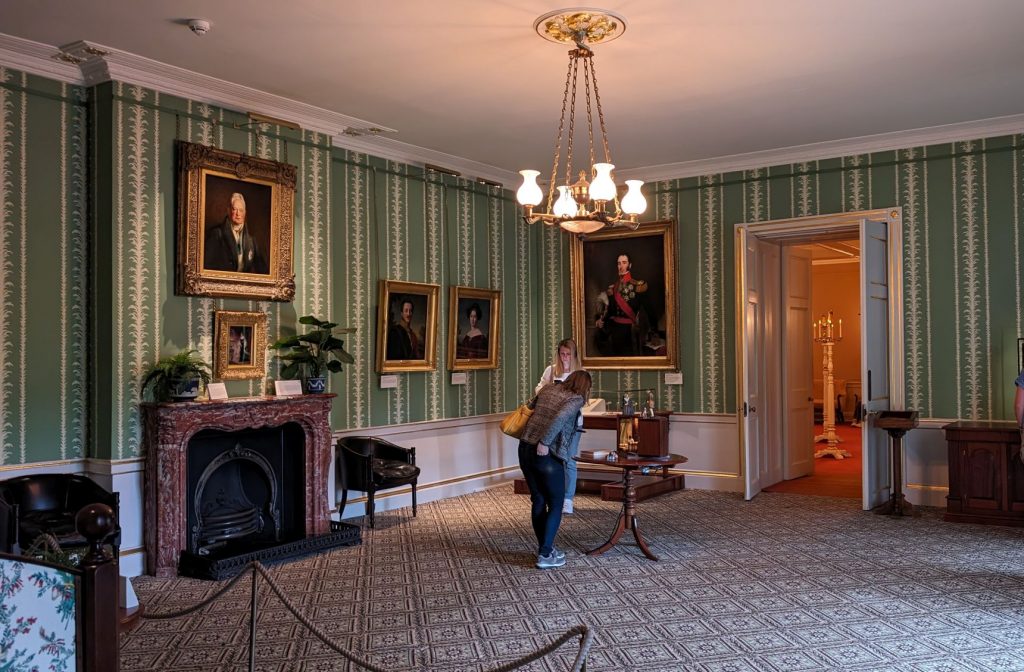
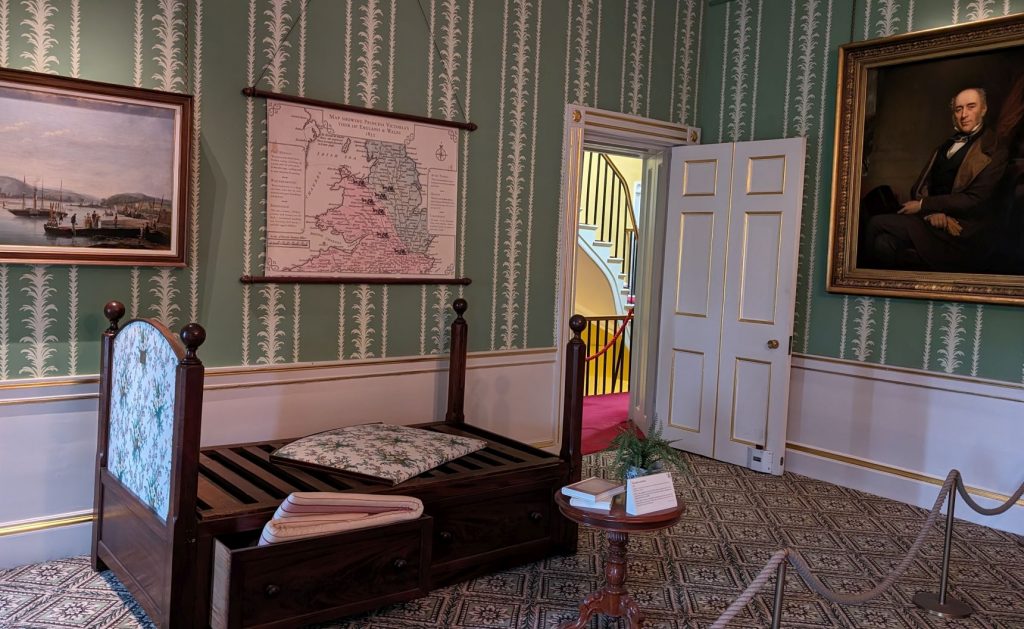
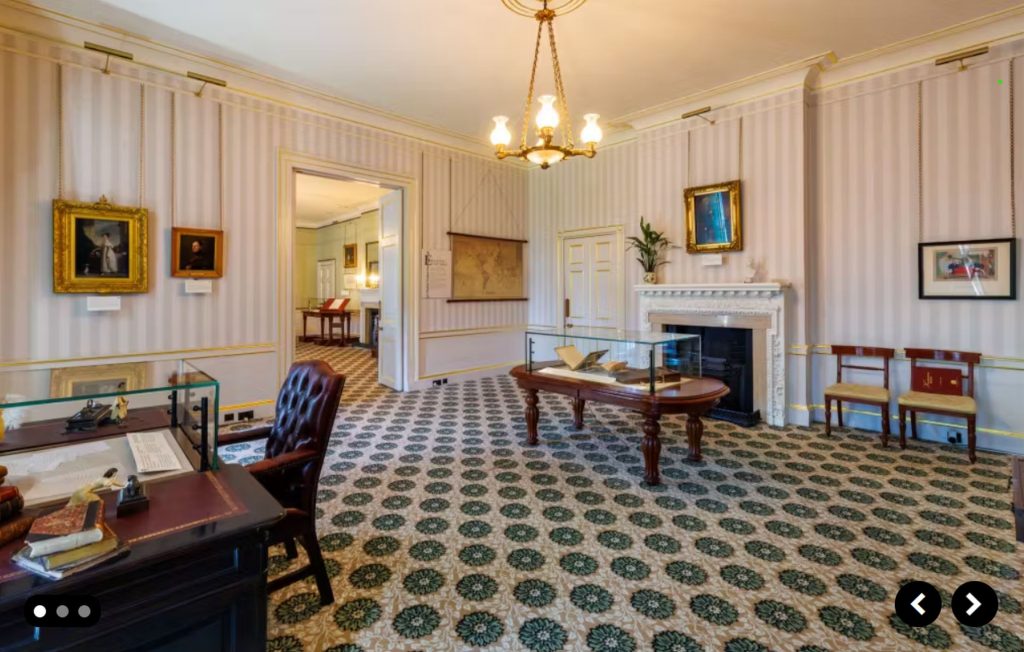
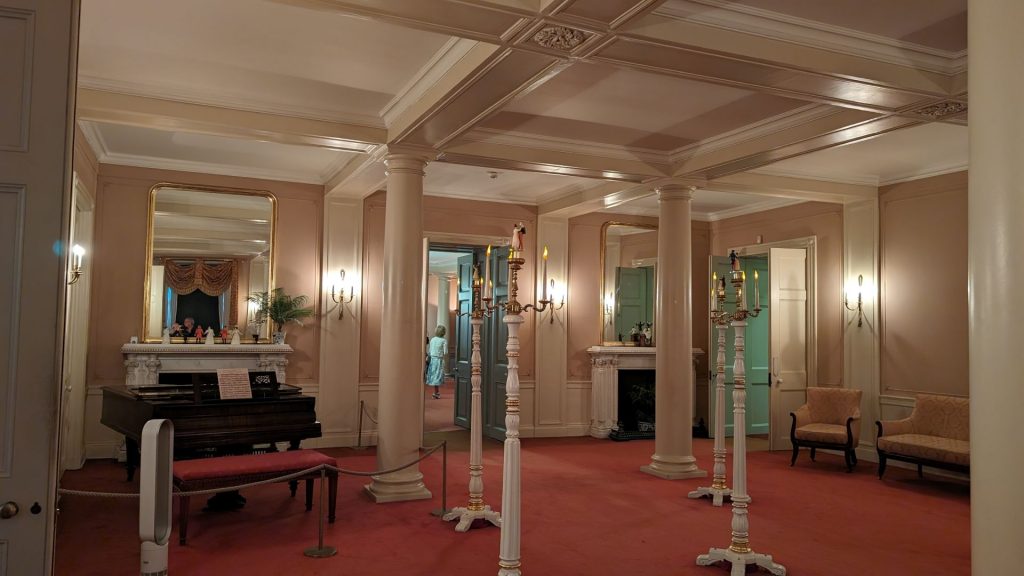
On the morning of 20 June 1837, Princess Victoria woke up to be told that the King had died and that she was now Queen. She was just 18 years old. She held her first Privy Council meeting that day in the Red Saloon and a few weeks later departed for Buckingham Palace, admitting she would miss ‘poor old palace.’
Pictured below is the “Privy Council” dress Victoria wore for her first official duty as queen. She was dressed in black as she was in mourning for her uncle William IV. Over time, the dye has degraded, creating this mottled brown color.
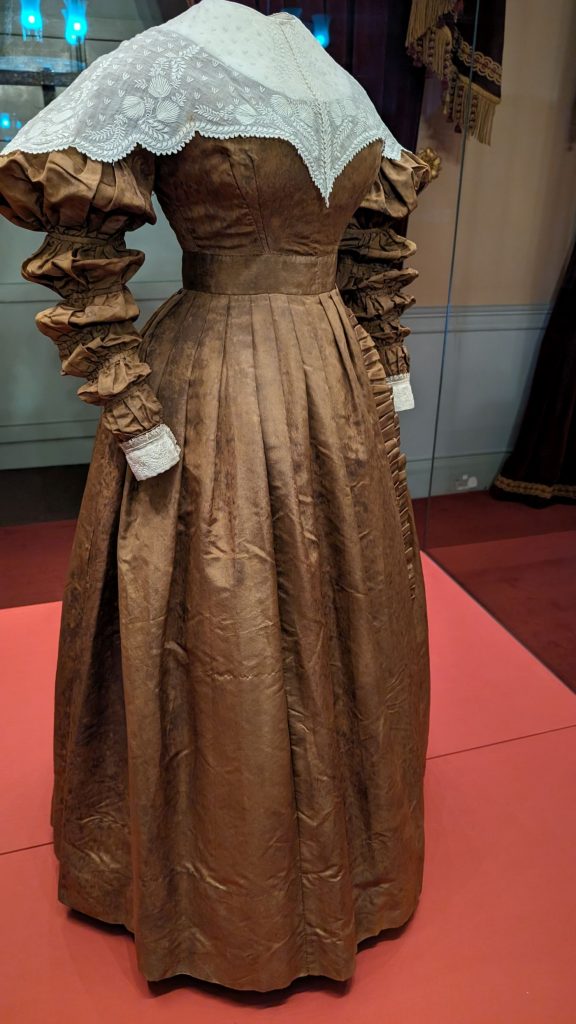
There was, of course, much more to see, but I think I’ve shared enough.
It was time eat dinner then go to the Duchess Theater for another night of live theater. Along the way, we made some calls. 😉
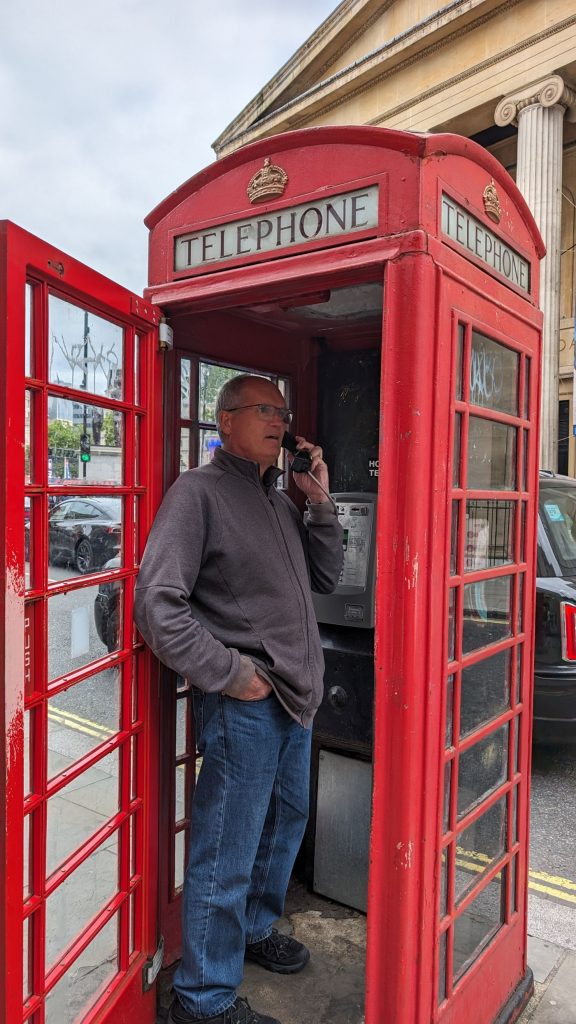
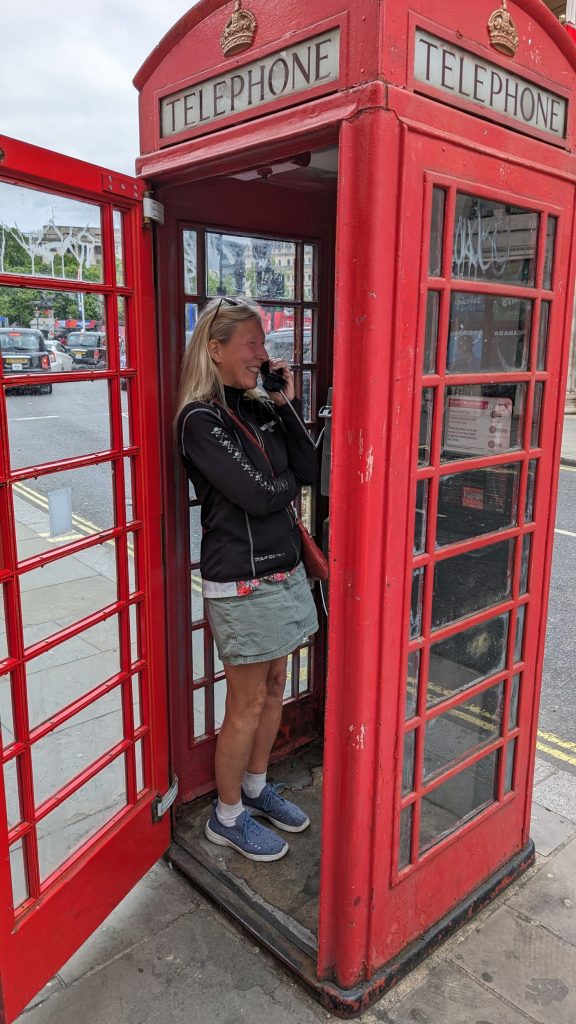
The West End has a lot of theaters. It was fun to see who was starring in the plays. Do you recognize this guy? If not, Google Tom Holland.
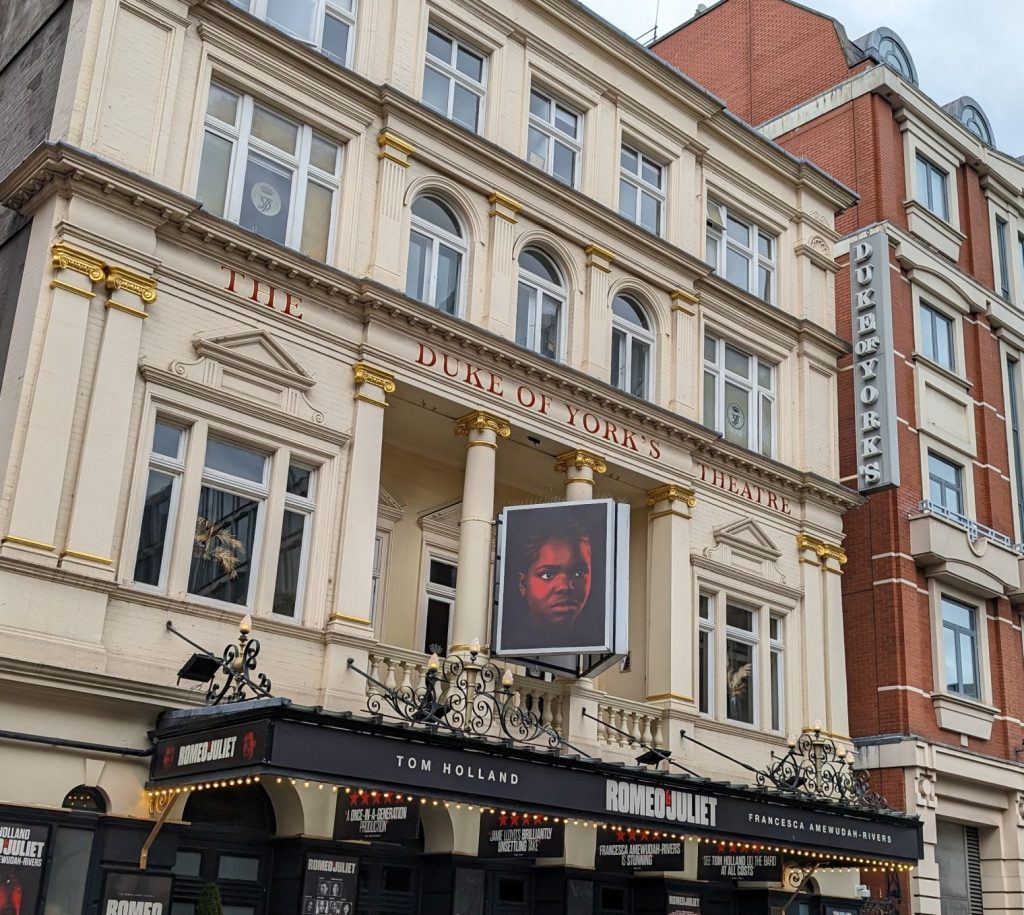
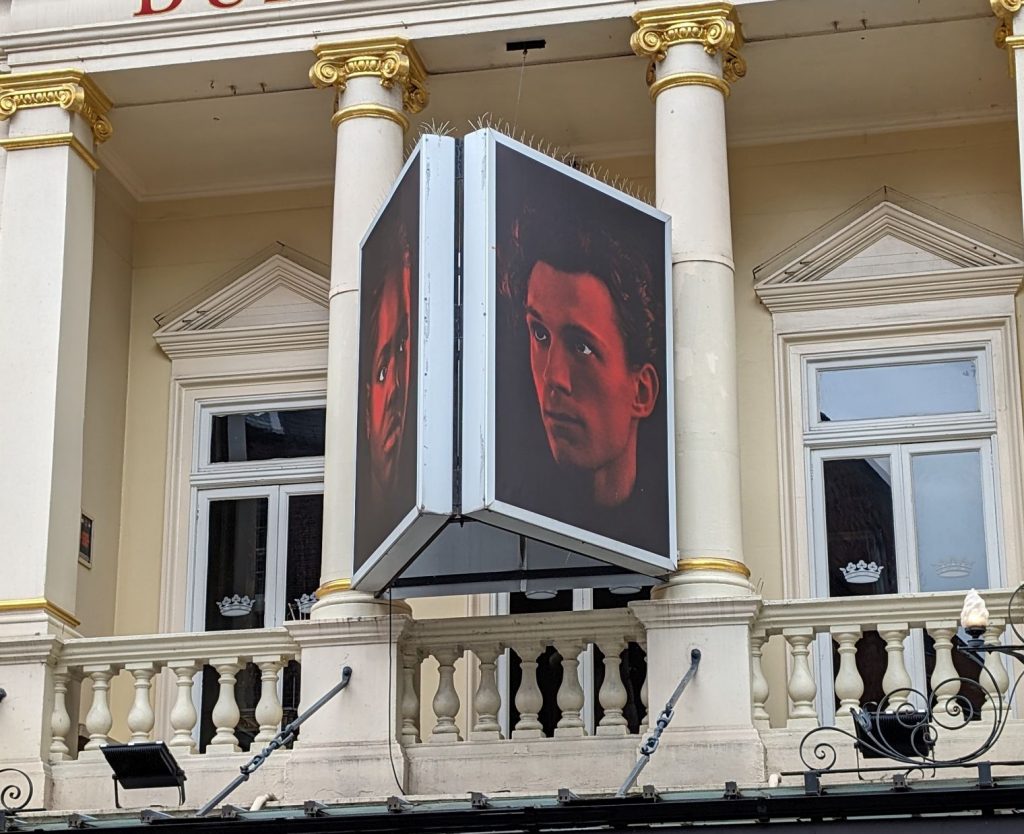
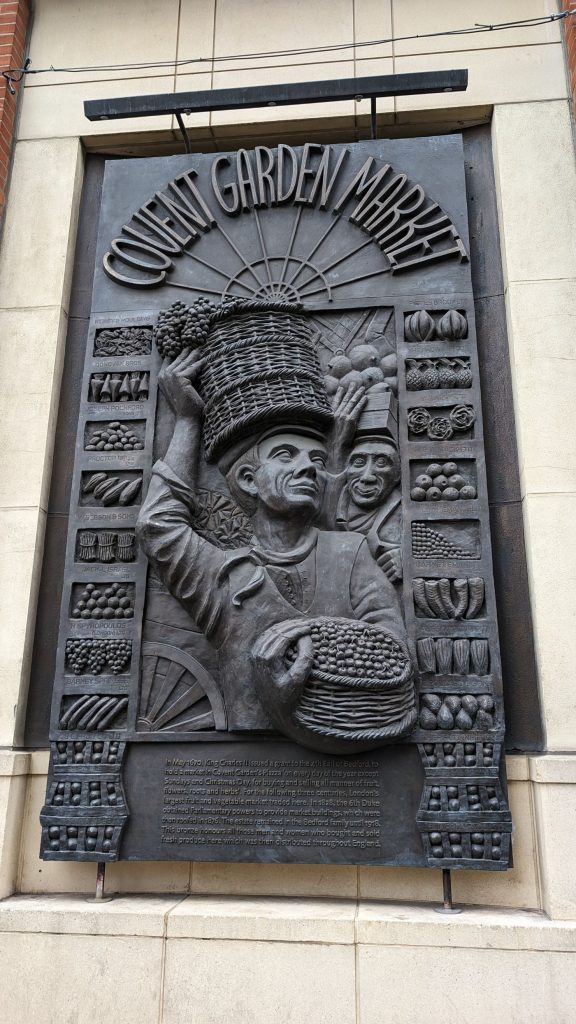
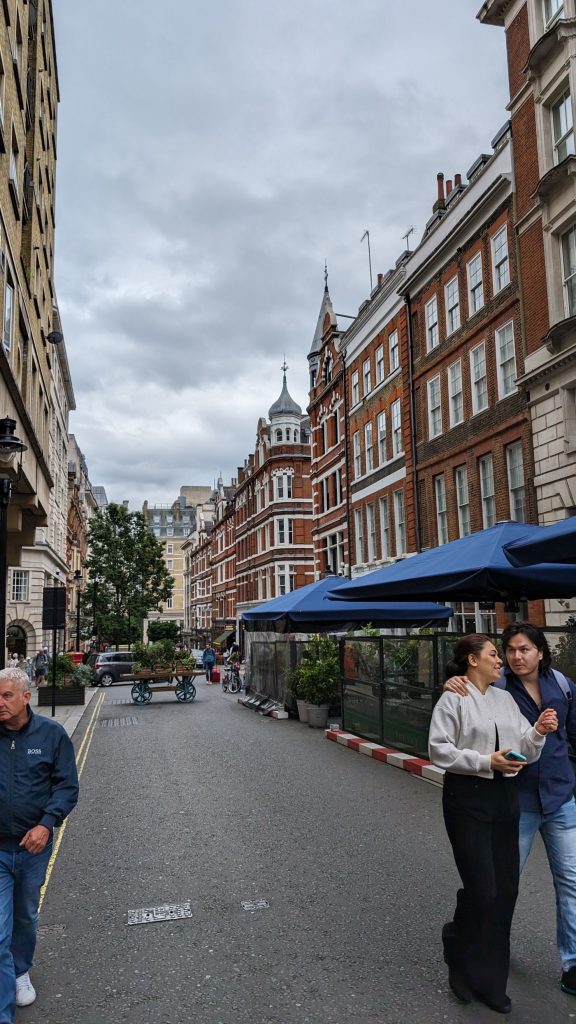
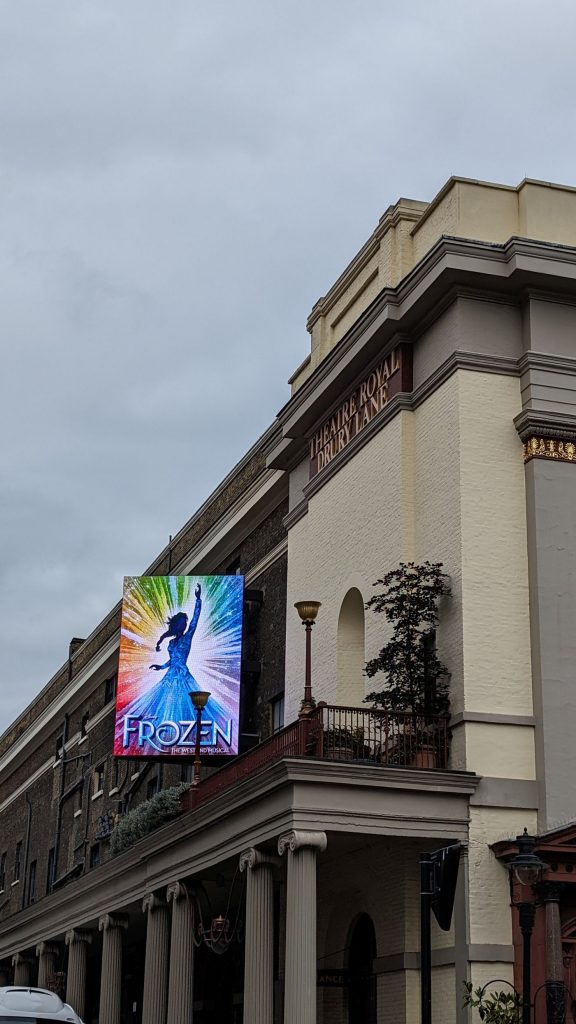
I’d read about Sarastro, famous for its theatrical theme and opulent decor. I didn’t know anything about the food, I was in it for the ambiance.
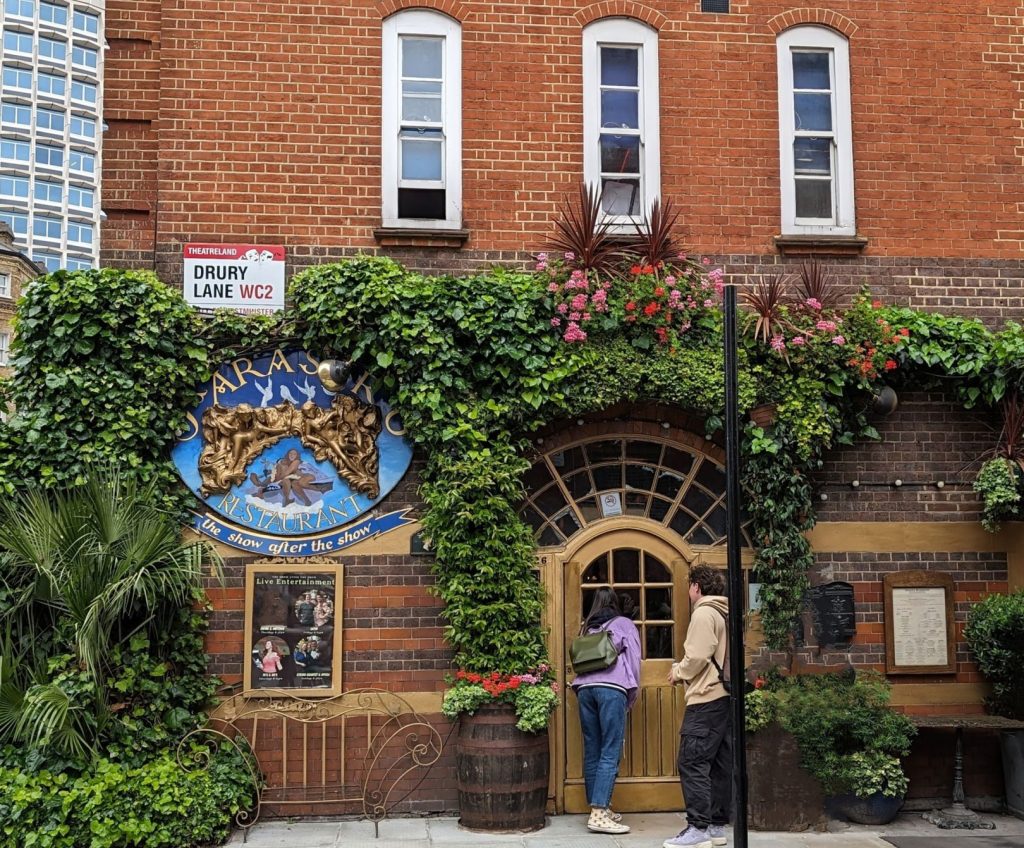
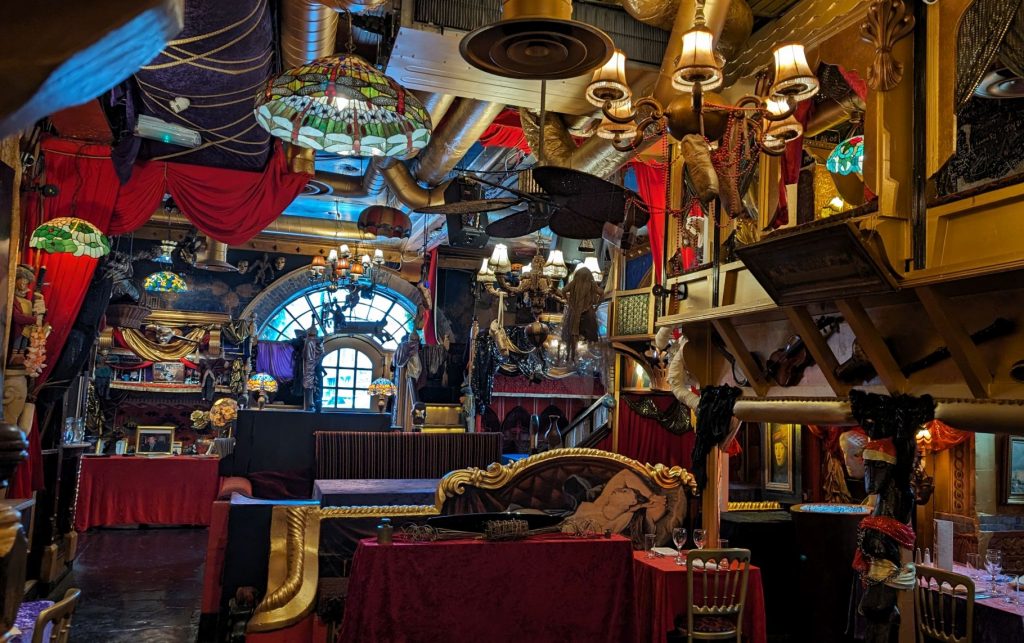
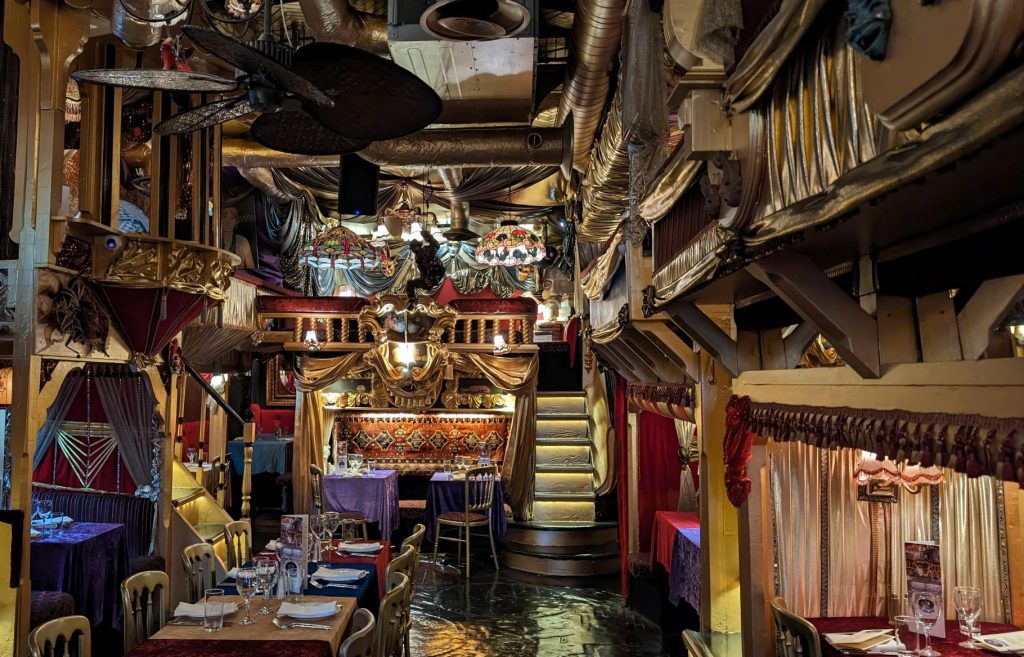
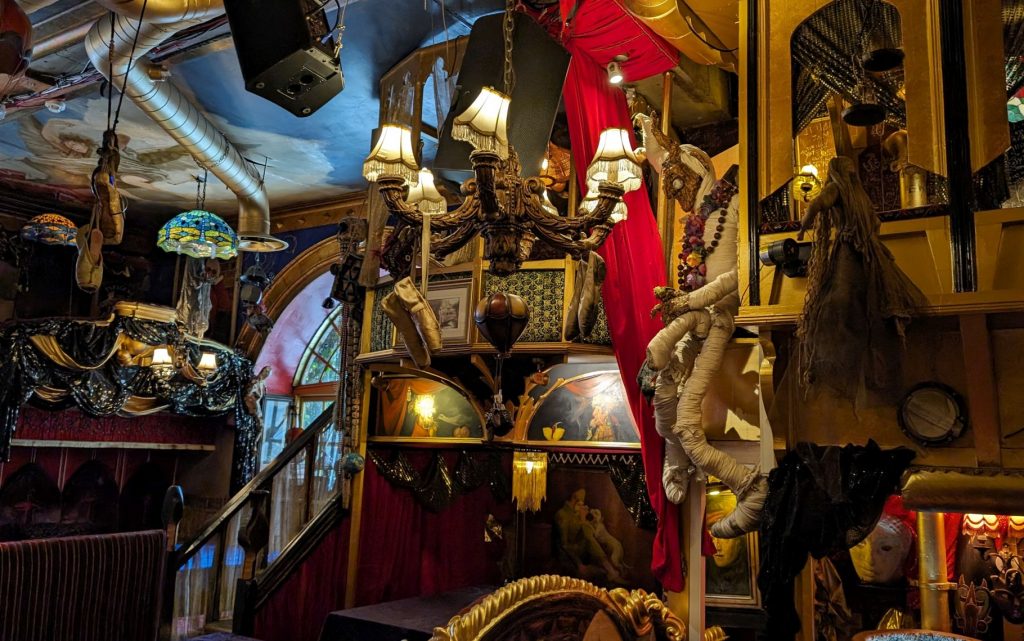
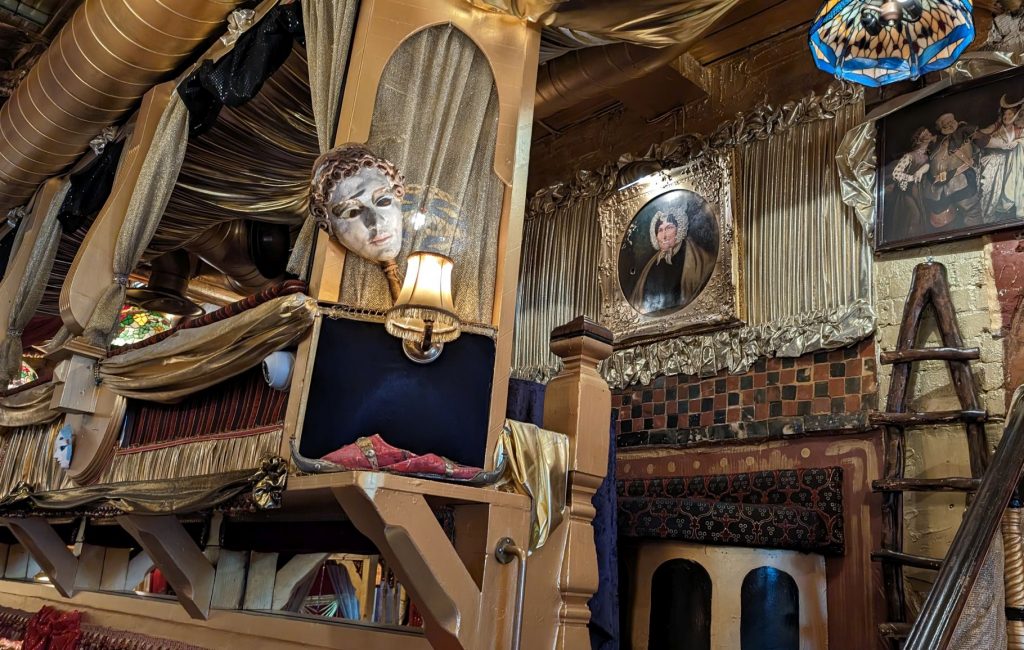
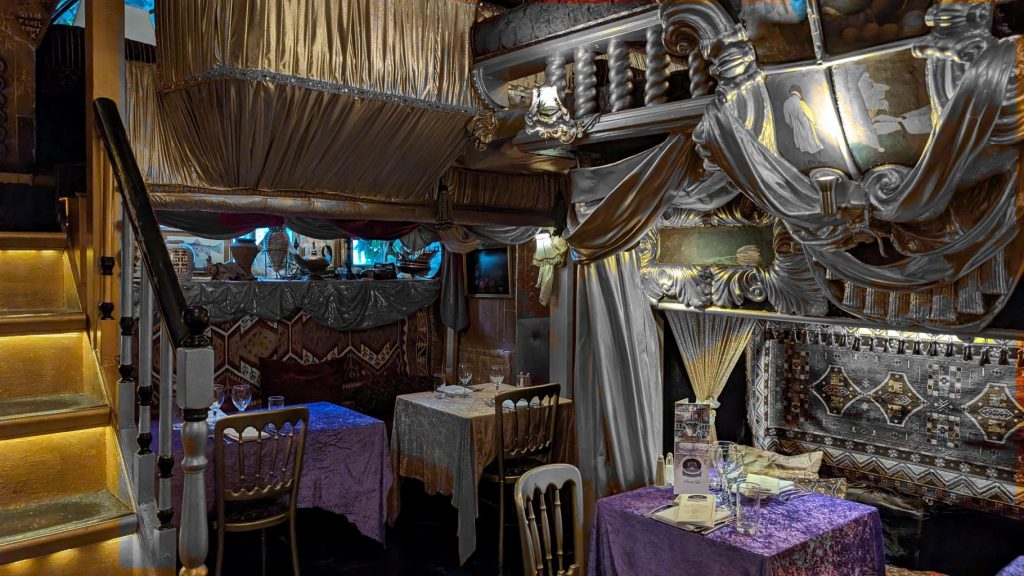
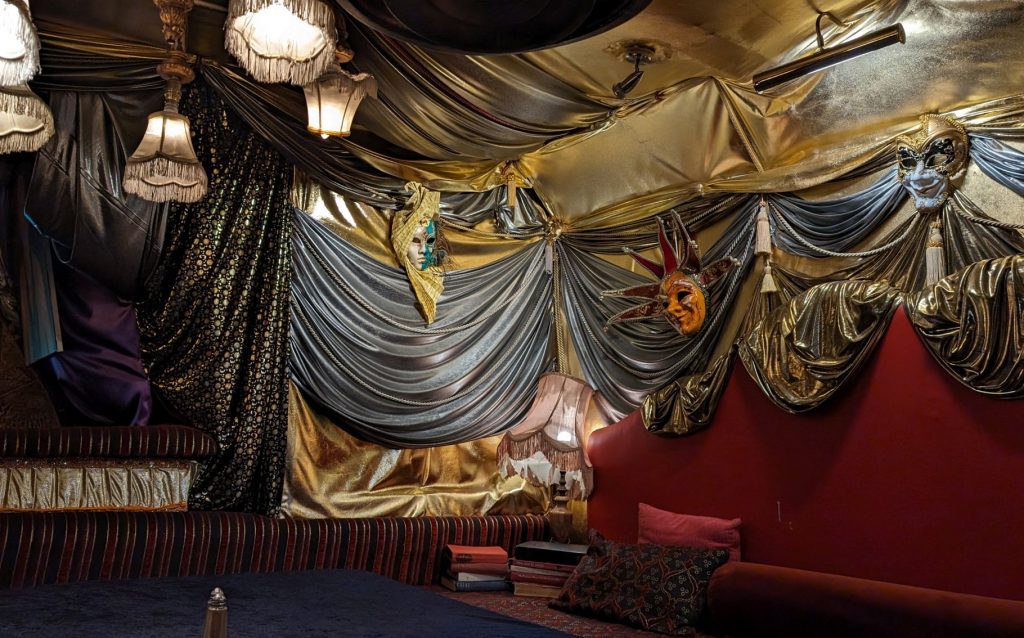
“The Play that Goes Wrong” was hysterical!
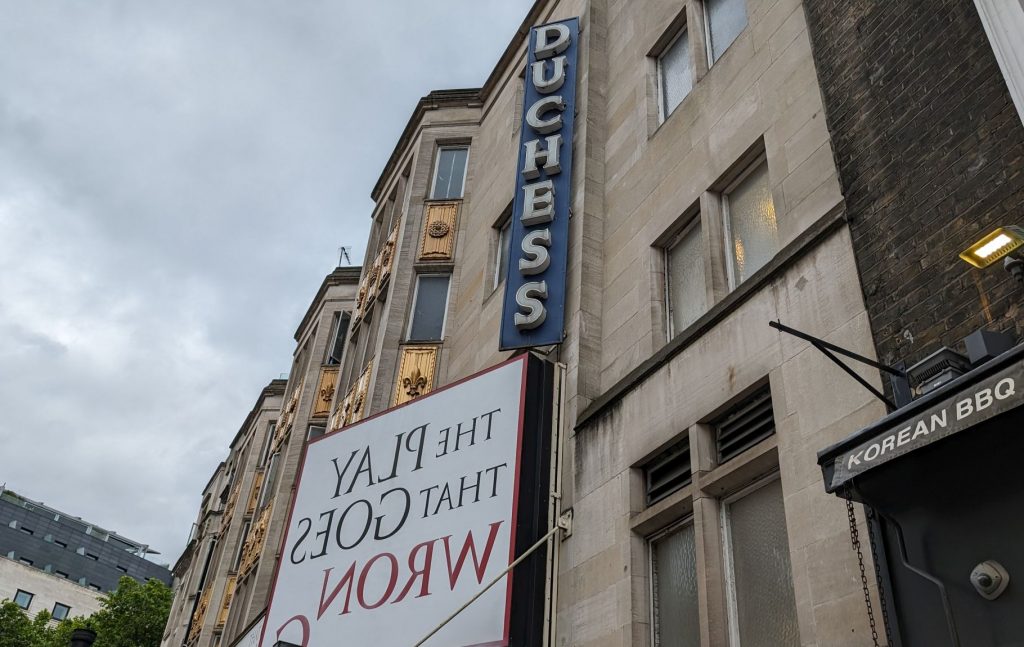
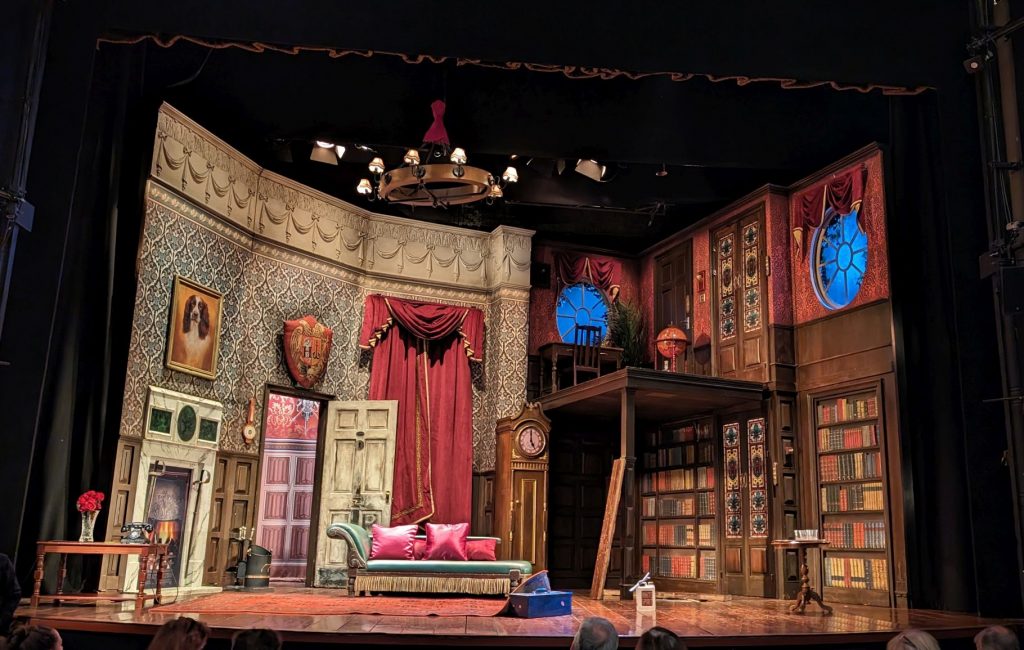
We left London the next day. Follow our travels in the UK and Ireland in the next several posts.
